#extroversion of an immortal
Text
Korean Manhwa Men (of modern setting genre) I'm Currently Addicted To...


Doo-joon Kang from Positively Yours
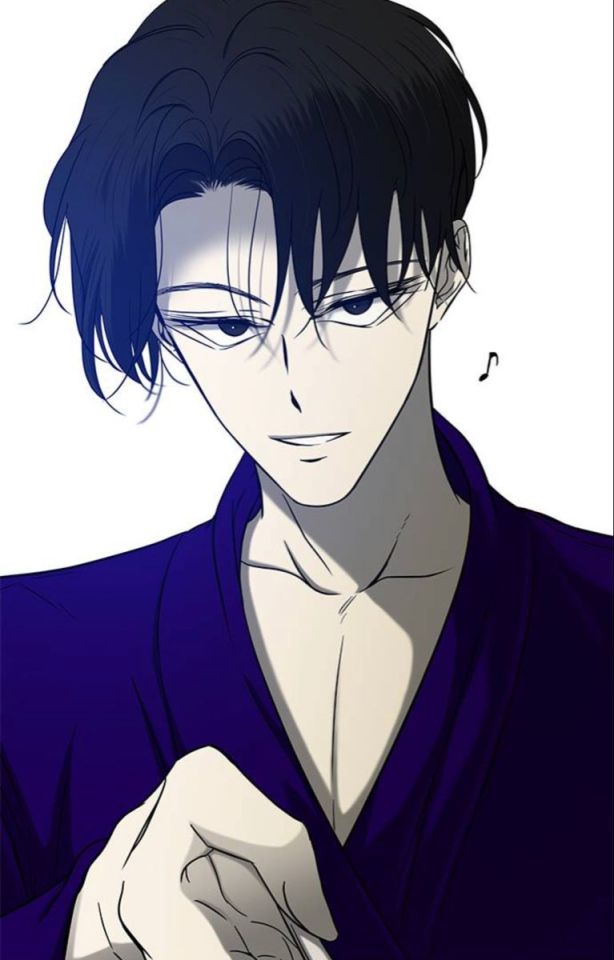
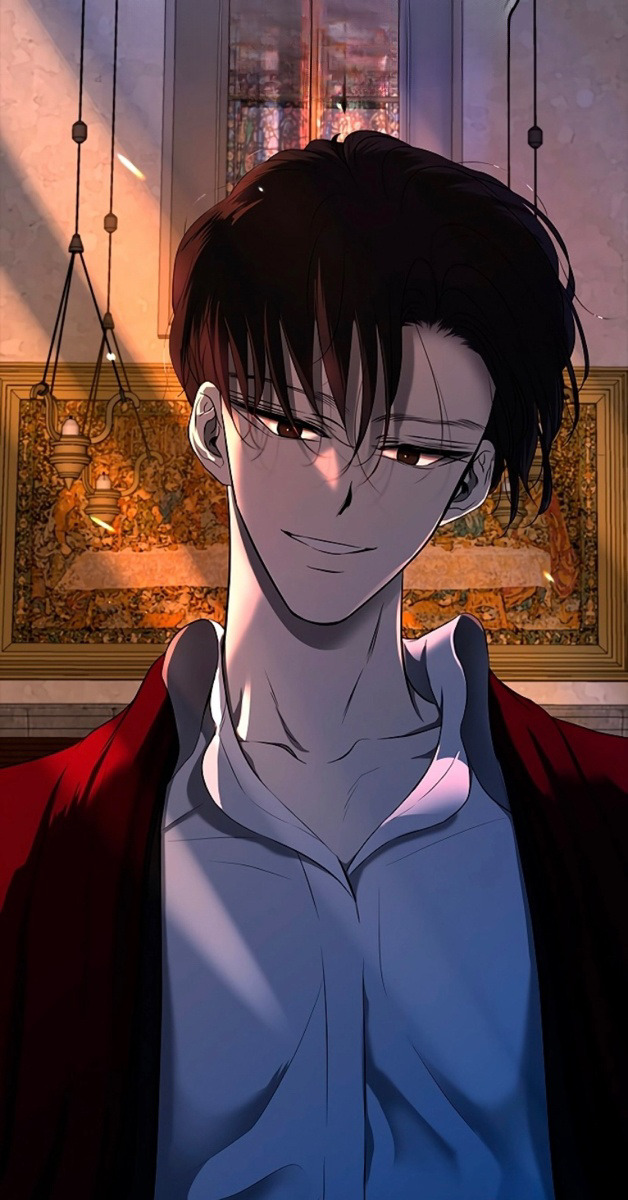

Park Yoonsoo from Olgami
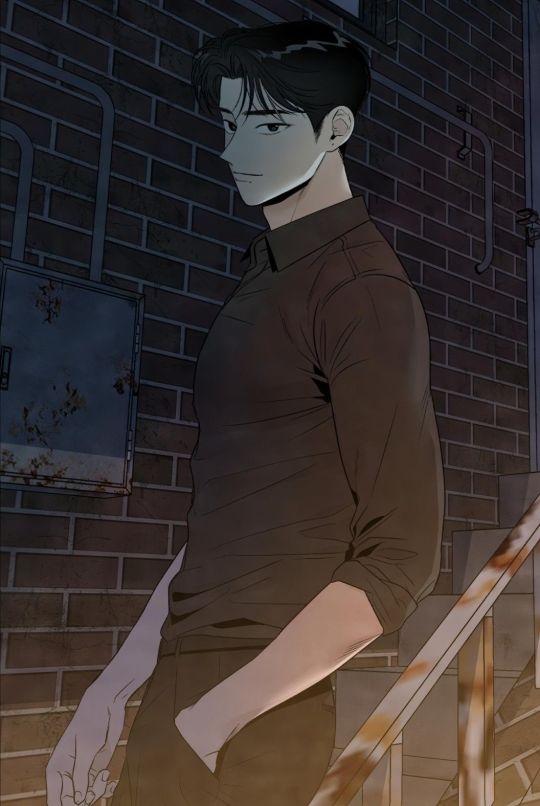

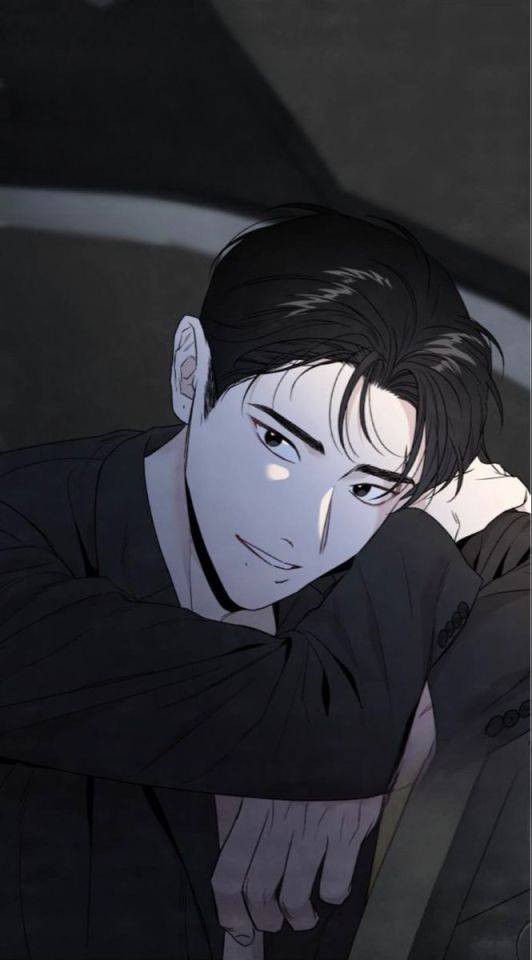
Cha Gyeol from The Reason I Decided To Die


Choi Chan from Psychometer Fragmented Memories
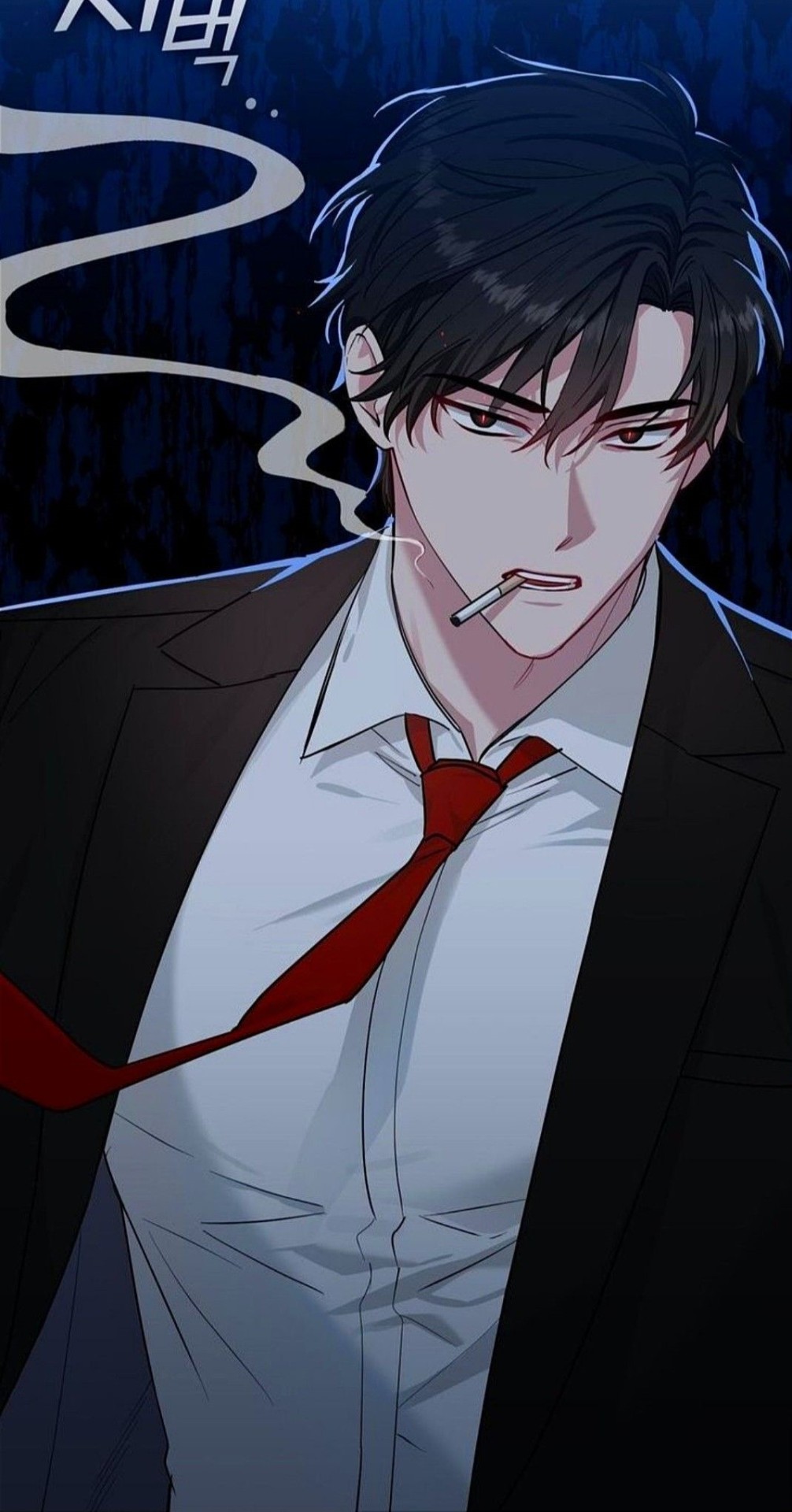


Taegyung Seo from Fly Me To The Moon


Lee Dohoon from Food Chain



Baek Siyoon from Free In Dreams
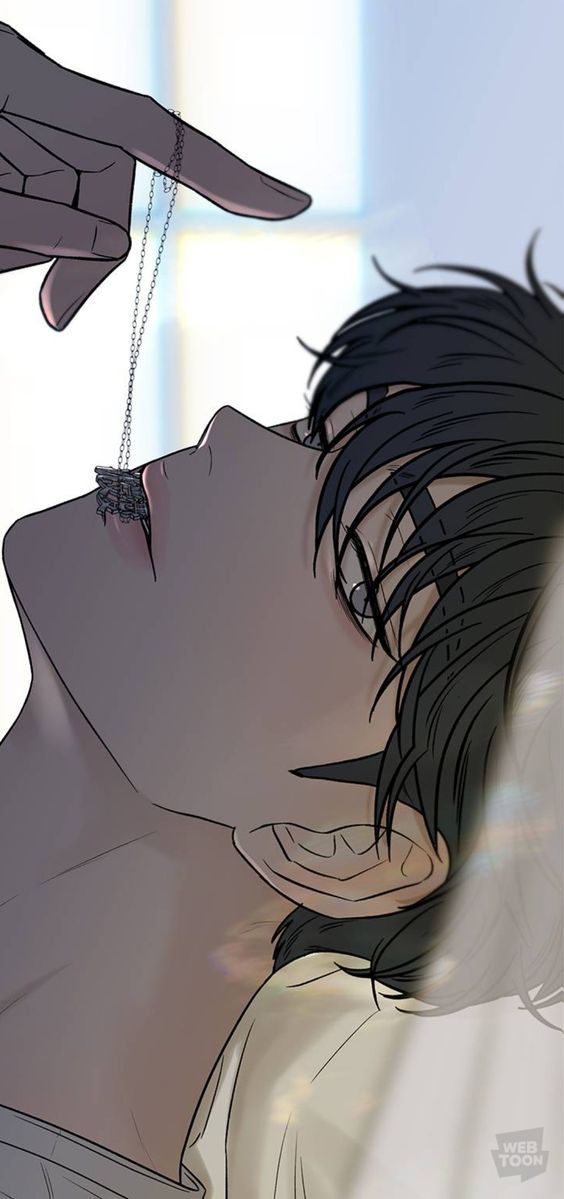


Go Eun-Hyuk from Operation Name Pure Love

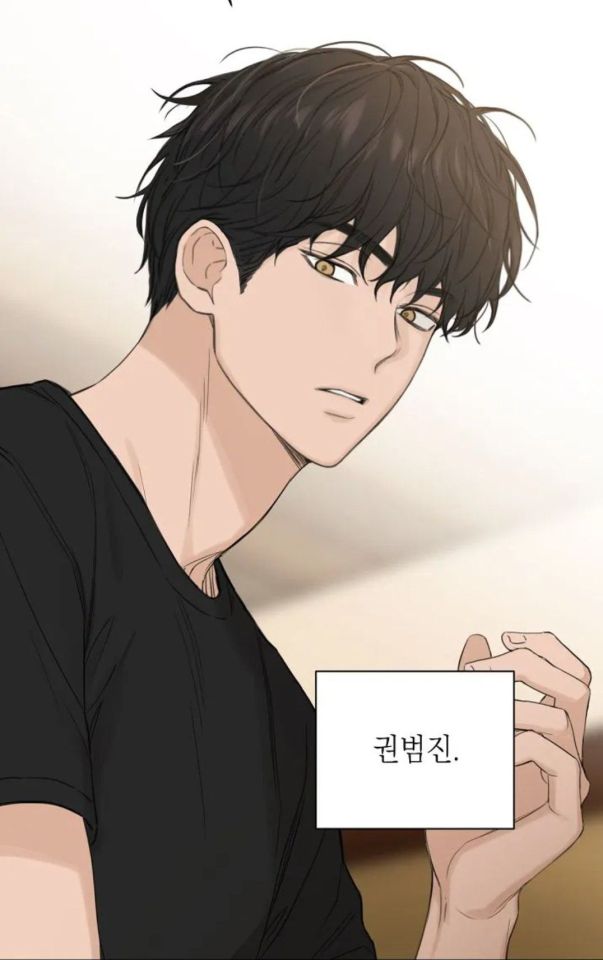
Kwon Beomjin from Just Twilight

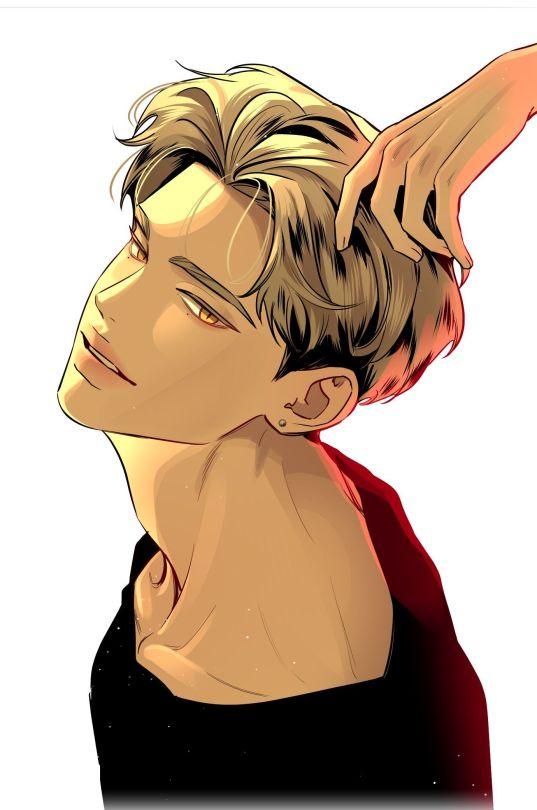
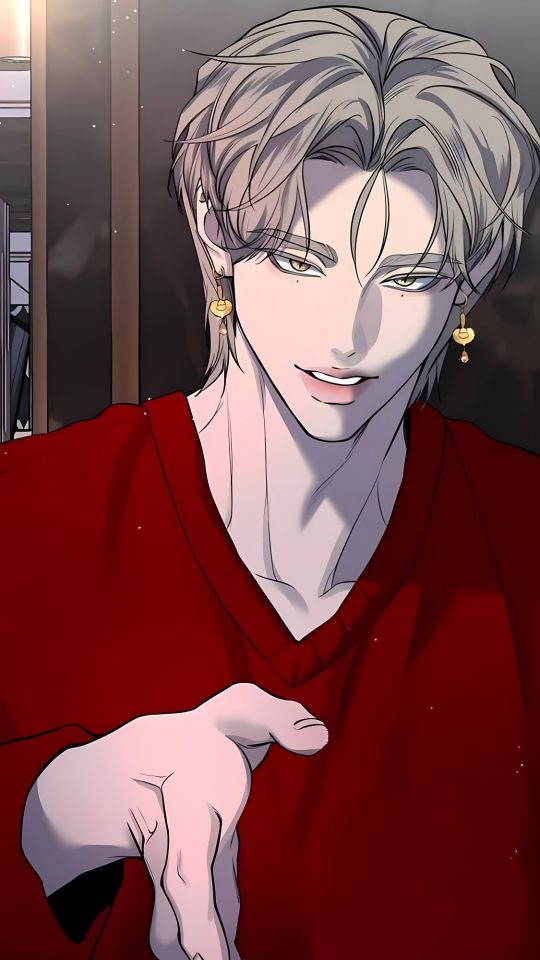
Baek Shiho from Extroversion Of An Immortal



(From left to right)
Ryu Kang Hyun from Divorce Is Easy, But Love Is Hard
Cha Yiheon from Love Class
Ki Yoon-Gi from Please Teach Me, Senior
Just now I noticed something... I certainly have a thing for black-haired male leads lmao!!! 😭😭😭💕💕💕
(My taste in men is quite problematic since half of them here are red flags, but don't worry as red is one of my favorite colors 🚩🤩😘😅)
#manhwa#korean manhwa#romance manhwa#manga#anime#positively yours#olgami#extroversion of an immortal#divorce is easy but love is hard#love class#please teach me senior#operation name pure love#operation name true love#free in dreams#dreaming freedom#fly me to the moon#the reason i wanted to die#the reason i decided to die#my reason to die#food chain#psychometer fragmented memories#baek shiho#baek siyoon#cha gyeol#park yoonsoo#kang doo-joon#go eun-hyuk#taegyung seo#choi chan#just twilight
244 notes
·
View notes
Text



🥀 𝕬 𝕹𝖔𝖙 𝕾𝖔 𝕱𝖆𝖎𝖗𝖞 𝕿𝖆𝖑𝖊
#manhwa recommendation#manhwa#webtoon#webtoon recommendation#ridibooks#tapas#tappytoon#kakaopage#lezhin#pocket comics#copin comics#manta comics#webcomic#naver#adventure#drama#romance#A Not So Fairy Tale#Extroversion of an Immortal#선녀외전
13 notes
·
View notes
Text
` Extroversion of an Immortal




2 notes
·
View notes
Note
May I request a BG3 matchup?
30; afab agender; rampantly bisexual. Medical lab tech (not the cool kind), about to start grad school for forensic biology. I collect postcards and preserved specimens, and raise tarantulas + other bugs. Enjoy making nature journals, birdwatching, puzzles, music, theatre, museums, analyzing horror media, building models, working with clay, writing, reading, and board games (though I get a bit too competitive). Great in the kitchen. Autistic/ADHD. Get sensory overloaded easily. Love meeting people but mostly wish I could exist invisibly and not speak. Chronic pain limits physical activities. Most content during stormy days with candles and coffee, baking or doing a jigsaw puzzle with the windows open and music playing. Think I'm unattractive and obnoxious. OCD + bipolar dictate a lot of my brain. Tendency to word vomit and have difficulty articulating off of paper. Complain a lot and can be passive aggressive. But also like to see people happy and taken care of, and want to leave things better than I find them when possible.
A/N: Alright Tarantula Anon, since you mentioned you’re bisexual, but didn’t state a gender preference, I’ve picked out the best matches- one male and one female for you.
Your best Baldur’s Gate 3 Matches would be Astarion (Male) and Minthara (Female)!
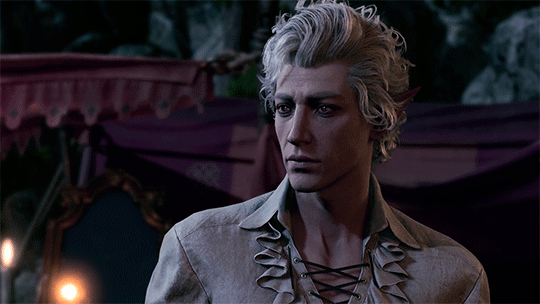
➶ Astarion is also a character I would characterize as “rampantly bisexual” (or pansexual to be more specific in his case lol). Gender presentation isn’t something he factors into attractiveness. If he likes you, he likes you. If he thinks you’re hot, he thinks you’re hot, etc. You get the idea.
Being an immortal vampire, Astarion knows a thing or two about biology. Mainly about how to remain undetected among the human population. In the game, he explains how he never smells like a typical vampire or vampire’s den because he makes a point to scent himself with a mix of fragrances. And while he may not be a medical professional, he’s certainly had his fair share of anatomy lessons, be it distant viewings at the food of Cazador, from the many creatures he’s been forced to seduce. It’s not an exact equivalent, but I do believe he would be fascinated by the kind of work you do regarding live and preserved specimens.
And while I don’t think he’s a bug person (mainly because they were his one source of nutrition for so many years), I think he could be taught to appreciate them over time. Perhaps you could show him how all creatures, even small ones, are incredibly unique and have their own role within our vast universe. It’s humbling to think we are all so incredibly tiny and yet vastly important to the people around us.
There’s so much he’s missed out on experiencing, I think he’d quite like doing any of those activities with you: birdwatching, solving puzzles, listening to music, going to the theater or the museum, tinkering, making ceramics, writing, or reading, or playing board games… Anything! Everything! He especially enjoys the competitive nature of your games. He finds he quite likes the feeling of winning, and he plans on doing it more often. Don’t worry though, he’ll play fair. Well, fair for him, anyway.
He cannot eat so he doesn’t get to fully appreciate your kitchen prowess. But he does enjoy helping you cook. It’s strangely comforting for him to do something so domestic. It’s in moments like those, that he can see the rest of your lives together playing out.
Similarly to you, Astarion loves meeting new people. Or at least he thinks he does. So much of his extroversion was a facade, he’s not certain what part of his people skills are him and which parts were survival. So he needs time in between, away from crowds and strangers to calm down and recharge. He’s grateful that you often tug him away, reminding him to excuse the two of you before either one of you gets too overwhelmed.
He may not be a magic user, but he does what he can to support you in managing your chronic pain. He’ll get Halsin or Shadowheart or even Gale to lessen some of your symptoms. He doesn’t try to cure your condition, nor does he expect you to cure his. However, if finding a more permanent solution to your pain is something you’d want, he’s more than ready to take that journey with you.
He doesn’t think for a second that you’re obnoxious. And trust him on that. He’s met some of the most obnoxious, overwhelmingly annoying magistrates and lords in his first life. He assures you constantly: that you are nothing like them. You’re smart and kind and beautiful. Even if you can’t see it, he sees it for you. Astarion knows what it’s like to live with a body (and by extension a brain) that tells you you’re never good enough. There are still moments when he can’t see himself in a mirror for example, when he thinks of himself as a monster. He’s so grateful you’re there to comfort him and tell him otherwise.
His favorite thing in the world is to cuddle with you next to a large bay window, watching nighttime thunderstorms roll in, a book in his lap and you beside him.
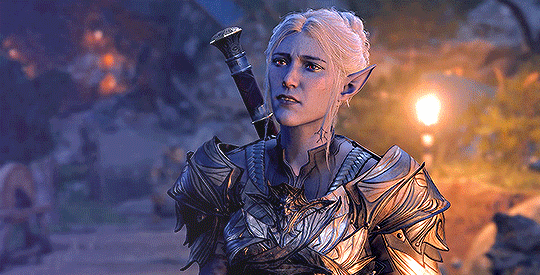
☾ Minthara is often characterized as closed-off and cold. Which you could argue is true. Or you could see it as her being logical, and protective of herself and her heart. She is a drow, and by nature, well accustomed to the more gruesome side of human nature. She feels at home surrounded by macabre, whereas others may be disturbed. I think she’d find your work fascinating. And spiders are something she knows a lot about. Drows and spiders go hand in hand. She sees tarantulas as the perfect pet, they’re small enough to be contained but large enough to have personalities and be something incredible to watch.
She especially enjoys reading horror stories with you or visiting theaters or museums with horror exhibits. Perhaps one about ancient methods of torture- now that would tickle her fancy. And she appreciates your wit and candor when it comes to playing games or solving puzzles with you. So few people treasure such traits in a companion, but not her. She knows how important it is to have a discerning significant other, especially if you are going to be spending any time in the Underdark with her, where being perceptive is a must for survival.
She loves your cooking. As a drow noble, she was familiar with the concepts of fancy feasts and indulgent desserts. However, due to her position, she could never truly enjoy them, for fear of being poisoned by enemies. With you doing the meal-making, she doesn't have to worry about that anymore.
Unlike you, however, Minthara is not that fond of meeting other people. She much prefers the two of you keep to yourselves unless otherwise necessary. People are tiring, and so often unimportant. She sees no need to waste her time and social graces on them. You’re the one she loves. If she’s going to do something with anyone or make an effort, it’s going to be for you and you alone.
She used to think admitting pain was weak, now however, she knows it takes an inner as well as outer strength. She will go to whatever length to ensure your comfort. Simply say the word and she will get it for you. In seeing your survival, Minthara has developed a great admiration for you as a person, seeing how resilient you are. That being said, she will not tolerate you speaking poorly of yourself. You are wonderful. You are strong in mind and spirit. You are intelligent and wise. You are gorgeous. You mean everything to her. She will not hear you put yourself down. She would not choose an unworthy mate, so do not think for a second that you are not deserving of her love and affection.
But by all means, do complain. The world can be so frivolous and pedestrian. She enjoys having someone who not only accepts hearing her own complaints but joins in with their own as well. You can be passive-aggressive in your grievances because she is extremely direct. If something bothers you, she’ll simply ask you if you wish her to kill it. And no she doesn’t care if that’s morally wrong, because for you, she would move heaven and earth if it made you happy.
She is fiercely loyal and now that she is your loving partner, you cannot shake her. She is utterly and wholly devoted to you.
#baldurs gate 3 x reader#astarion x reader#minthara x reader#bg3 x reader#bg3 imagine#baldurs gate imagine#baldurs gate x reader#baldurs gate matchups#bg3 matchups#matchups
20 notes
·
View notes
Text
(submission)
I want to submit this anonymously. I also apologize for any mistakes since English is my second language. (Btw, while I can say this: You are great! I love your blog!)
Y’all… I found a new adoptive mother x son canon…It’s an ongoing Korean Webtoon named «A Not So Fairy Tale» («선녀외전» in Korean, also «Extroversion of an Immortal» and «The Fairy Outreaching»), based on the famous Korean fairy tale «The Fairy and the Woodcutter». Beware! The main romance is with another dude (tbf, he is adorable). Also the son is (most likely) the second male lead (though, cmiiw, the author refused to say who is the male lead, so we can hope…).
Also TW: their backstory is dark AF. They are both non human, and their actions are questionable at best. Her mental state is awful, she has PTSD, hates men due to trauma, and overall cannot understand her emotions well. He is manipulative, sly (he is a fox after all) and quite possessive of her and has a fear of abandonment. He is also a masochist.The FL Cheon Moran is a fairy (goddess) who is trapped in the human realm because a man stole her robe and tried to make her his wife; she killed him with axe, but was unable to return to her home without her robe. She basically had two options: either wait for reincarnation of that man (and he would tell her where her robe was hidden) or ask some divine beings to bring her back, but they were forbidden to do that. Later, Moran befriended a heavily pregnant nine-tailed fox, who later died, while giving birth to the twins, Miho (sister) and Shiho (brother). Moran decided to raise and train them, so they would ascend as gods and would bring her back to human realm (they are forbidden to kill/hurt humans).
She also tried multiple times to kill Shiho, because she is afraid (hates) of all men, but she saved him all the time, because she is his «mother». Later, Shiho fell in love with Moran. When he understood that she tried to kill him, he was ecstatic — it meant that she did not see him as her son. She offered to register him as her son, and he refused. He confessed his love and said that she can do anything to him, because he loved her. They became lovers?… (it’s a bit unclear when). Some time later, Miho (Shiho’s twin sister) was brutally murdered by evil spirits. Moran killed all of her murderers, thus stripping Shiho from revenge. After he buried his twin sister, he went back to Moran, even though he truly believed that she did not love him nor his sister. Shiho still thought that Moran was the only person for him, that only she can understand him and be with him for all of his eternal life.
Later, Moran had a meltdown, begging to be back to the divine realm, it was too much for her, all the people she couldn’t save. She mused whether she should kill Shiho to save herself from the future heartbreak, but realised that she couldn’t, she didn’t want to kill him. They spent almost one thousand years together, waiting for Shiho to conclude his ascension. He is extremely afraid that Moran will find the reincarnation of the Woodcutter earlier than he becomes a god and that she will leave him alone. Btw, both Moran and Shiho believe that Jeha (other ML) is the Woodcutter. And, like, the quotes? THE QUOTES? Hello?…
«My pitiful goddess» (Shiho thinking about Moran, after her meltdown)
«I will make you into a god no matter what. Only death awaits a divine beast who has taken the life of a human. I won’t let that happen to you. From the moment you were born, you belonged to me. I put you through strict training from when you were a pup in order to make you into a god. And in exchange for starving you for a thousand years, I gave you my divine powers. I am a sculptor… and you are my masterpiece.» (Moran to Shiho)
«I was her adopted son… then her student… her baby, her masterpiece… And I’d like to become her companion as well, but I do not think she will readily allow that…» (Shiho introducing himself to Jeha, other ML)
And this dialog from chapter 18:
Moran: «Sorry for bringing the baby along. He has severe separation anxiety, so I couldn’t leave him anywhere»
Moran’s subordinate: «I’m sorry, Moran… But he’s not exactly a baby, is he?»
Moran: «Oh, sorry. He is a baby in comparison to me. He’s my protege and adopted son.»
Moran’s subordinate, thinking: «That’s not the vibe I’m getting from them…»
Shiho: «You know what? Humans would normally see the two of us as lovers.»
(Their backstory is in chapters 37-48, for those who are interested)
Imgur Gallery of them: https://imgur.com/a/oz0YtmN
---------
Dang, that gallery. Wow. 🔥 🔥 🔥

This is a fantastic rec, Anon. Thanks so much!
#submission#asks#nr#A Not So Fairy Tale#first post#comics#web comics#mother and son adopted#moran and shiho#canon
6 notes
·
View notes
Text

typical liyue adepti interactions
manhwa: extroversion of an immortal
#;hibernatking | ooc#//i saw this cap on twitter and it clicked#//time to look for where to read this#//ty xixi for sending this to me
8 notes
·
View notes
Text
Extroversion of an Immortal

Read manhwa Extroversion of an Immortal on teenmanhua.com
There is a Fairy named Chun Moran. She killed a woodcutter and lived like a celebrity while stuck in the human world.
She is discovered by 'Sa Je-ha', which is a detective in charge of a murder case she is involved in.
On the other hand, the closer he gets to him, the more the whereabouts of the lost wings are revealed...
A story of revenge, hatred and love of a 21st century fairy trying to restore her wings.
Read the full article
2 notes
·
View notes
Text
An aspect of immortality that I haven't seen much is coping by meeting lots of new people.
Like learning more and getting really good at whatever skill would get repetitive after a few centuries I'd guess, since you know it's a matter of time and if you don't like learning that much it'll get stale.
But meeting new friends, a new family (<- they are one and the same) is something that an immortal could do forever. Obviously as they lose more and more their grieving mechanisms would get more and more relevant, but instead of the usual isolation and cold attitude instead they lean more into extroversion, going out there to meet new people to drown those not there anymore.
And what of some immortal that has been doing it since so long ago the memory of their first ones is blurry. Perhaps one of playing a game that hasn't existed for millenia. Trying to remember that meal that they liked so much, but all the details have long faded.
Do they feel sad? Numb? Do they push the discomfort away and go meet their (current) friends?
0 notes
Text
Don't Stop - December 1999
Was I aiming for a millennium party hit with this one? Probably not, that would be too much like extroversion, what was aiming for I think was to cram as much ReBirth into a track as possible. I'd been playing with ReBirth a lot and was getting fairly confident with it.
As with Flute, I don't have the source mix of this, just a low quality mp3 that has somehow made it through the years of backup CDs and portable drives to the immortality of cloud storage and music streaming websites.
I don't really remember making this track, so I may have been a little the worse for wear, but I do remember finding it a couple of years later labelled '140 track' and having a vague recollection of working on it. I found I remembered building some of the drumbeats and editing some of the samples.
With hindsight, the final bit of ReBirth is a bit loud and overpowering, but not a lot I can do about it now. I'm guessing that bit was done at the end of the night
0 notes
Text
My Fav Korean Manhwa Recommendation List
For the last few days, I've been reading Korean manhwa/webtoon series non-stop and man, they're just so great!!! 😍😍😍
These are some of my fav manhwa I've read so far... All the stories are of modern setting btw... (I may do a separate recommendation list for historical/magical/isekai genre manhwa later on...)


Something About Us - (Childhood best friends turned lovers)
Status: Completed.

Positively Yours - (Strangers met for one night stand to lovers)
Status: Completed.

Seasons Of Blossom - (High school friends to lovers)
Status: Completed.

Please Take Care Of Me In This Life As Well - (Childhood friends to lovers)
Status: On-going.

Fly Me To The Moon - (Strangers met through unusual circumstances to lovers)
Status: On-going.

The Reason I Wanted To Die - (High school sweethearts to Exes to again lovers)
Status: On-going.

Revelation Of Youth - (High school friends to lovers)
Status: On-going.

The Odd One Next Door - (Frenemy neighbors to lovers)
Status: On-going.

Free In Dreams - (Strangers met through lucid dreams to lovers)
Status: On-going.

Operation Name Pure Love - (High school friends to lovers)
Status: On-going.

Just Twilight - (High school classmates to lovers)
Status: On-going.

King The Land - (Childhood friends to lovers)
Status: On-going.

Confession Attack - (Childhood best friends to lovers)
Status: On-going.

Our Secret Alliance - (Childhood best friends to lovers)
Status: Completed.

Ooh La La!! - (Complete strangers to sudden lovers)
Status: Completed.

Match Made In Heaven By Chance - (Childhood friends to sudden married couple)
Status: On-going.

Love Class - (Former high school Teacher X Former high school Student love story)
Status: On-going.

The Man's Games - (Childhood frenemies to lovers)
Status: Completed.

My Introverted Boy - (Introverted boy X introverted girl love story)
Status: On-going.

The Dilettante - (Enemies to lovers)
Status: On-going.

Olgami - (Enemies to toxic lovers)
Status: On-going.

The Law Of Being Friends With A Male - (Classmates to friends to lovers)
Status: On-going.

My Three Annoying Brothers - (Separate love stories of 4 beautiful yet chaotic siblings)
Status: On-going.

Divorce Is Easy, But Love Is Hard - (College Senpai-kouhai to office colleagues in love)
Status: On-going.

Marry My Husband - (Office senpai-kouhai to lovers)
Status: Completed.

The Boss's Proposal - (Office senpai-kouhai to lovers)
Status: On-going.

When You're Targeted By The Bully - (Enemies to friends to lovers)
Status: Completed.

The ones I haven't read yet, but intend to read them later in the future...
Love Of Mine.
A Guide To Proper Dating.
Act Like You Love Me!
The Couple Breaker.
There Must Be Happy Endings/Surely a Happy Ending.
Love For Hire.
Daytime Star.
First Love, Lasting Hate.
Extroversion Of An Immortal.
True Beauty.
Wedding Delusion.
Even If It's Not.
Only Hope.
Meet In The Middle.
Situationship.
My Sweet Dark Hero.
Dating My Best Friend's Sister.
Undercover! Chaebol High School.
Dear First Love.
Melt Me With Your Voice.
Yeon Woo’s Innocence.
My Messy Marriage.
As If Love Doesn’t Exist.
Let’s Meet After Work.
Please Teach Me, Senior.
#manhwa#anime#manga#romance manhwa#manhwa recommendation#something about us#please take care of me in this life as well#positively yours#our secret alliance#seasons of blossom#revelation of youth#olgami#the reason i wanted to die#my reason to die#operation name pure love#fly me to the moon#when you're targeted by the bully#the boss's proposal#marry my husband#the law of being friends with a male#the dilettante#match made in heaven by chance#love class#the man's games#confession attack#just twilight#free in dreams#dreaming freedom#king the land#see you in my 19th life
387 notes
·
View notes
Note
Hi there! Congrats on 300 followers! May I please have a matchup? One for IkeSen, and one for IkeVamp if that’s okay! 💖 A little about me: my pronouns are she/her, I’m a Leo, and my MBTI is ENFJ! I like to think I’m confident in myself, so I hate asking for help. I love to learn, but I also love to help others learn too. I enjoy getting to try new things, especially with others! I’m pretty extroverted, but still appreciate days where I can lounge and take time for myself to recharge 😌 1/2

Thank you✨ Here ya go, sweetie~
I match you up with... Comte!
Comte has a terribly weak spot for strong and indipendent women who can hold their own, so upon meeting you he can already feel his heart going at full speed when he feels your aura. It takes the self control he has learned in who knows how many years throughout his immortal life not to directly ask you to step on him each time you show him your leadership skills and self confidence.
He's basically whipped from the beginning, but he won't be making a move nor show his true feelings (aside from very light teasing remarks here and there) unless he sees some type of interest on your part, too. The moment you correspond his feelings he's on cloud nine, as he tries not to think too much about the future and all the obstacles you'll have to overcome
He respects your natural autonomy, and knowing how difficult you find it to rely on others, he'll try to give you as much space as possible; as soon as he sees you slightly more tired or stressed than usual though, he immediately steps in and helps you out while softly scolding you for not relying on him
If you love reading AND learning then rejoice! Comte's library has books so rare and old that you ask yourself whether he directly got them from the library of Alexandria before its burning. You can sit on the super soft sofa in his room and read one or snuggle his neck as you stay on his lap while he tells you stories and legends. It's a great way of combining the things you like the most while also not doing anything too energy consuming! Honestly it's actually a top tier date, and knowing that he trusts you enough to let you that close to him does things to your heart.
Good thing you like shopping! A little less good that you don't like it when he spoils you too much. That will always be a recurring "problem" in your relationship, being part of his love language, but maybe you can convince him to spoil you with cuddles instead and leave the gifts for important occasions only! The moment you convince him (he won't always stick to this, mind you), your relationship will go smoothly. With Comte there are no fights and little to no misunderstandings since you're both people who prefer to talk things over before jumping to conclusions and he tends to be quite compliant with your every request.
The only other problem that may emerge between the two of you is your eventual vampirification. Unlike Leonardo, our mama pureblood has no issue with biting you, and he actually plans on doing it at one point or another when and if you ever feel ready to take such an important step. He loves you so much that it is only natural for him to live a part of eternity with you, but in the eventuality you refuse to do so, he will respect your choice and won't mention it again
Your extroversion is something he's pretty grateful for. You don't have any problems attending balls or other types of public events; it's an easy task for you to entertain guests and dodge tricky or too specific questions in a way that doesn't let others in on your past and real identity.
It's a win-win situation for both on multiple levels. You get to witness real 19th century clothes, people and behaviors while experiencing things you could have only dreamed of back in the present, and Comte gets to enjoy your bright smile whilst maintaining his reputation
On the overall, you're truly the perfect example of what people call a power couple, and everyone in the mansion knows not to mess around with you unless they want to get a more-violent-than-usual spank session with the pureblood
Second choice: Masamune
What a peculiar lass he has stumbled upon! He chases anything that sparks some kind of interest in him until all the surprise and excitement is completely squeezed out till the last drop. What makes you so special though, is that you never cease to fuel his amazement; no matter the situation, you always react unpredictably, and he adores that. You're strong-willed, and not even Nobunaga can order you around when you set your mind on something.
Bold and indipendent, you're quite the rare sight among other women in the Sengoku period, you'd surely make a great warlord! Masamune takes it upon himself to show you around and explain you how things work; keep in mind that he's no Hideyoshi nor Mitsunari, so his explanations can involve more a practical approach which isn't always the safest way. Wanna learn how to ride a horse? Masamune raises you up to sit between his arms and almost flings you both off a cliff. Want to learn more details about formations and how soldiers live? He takes you on the battlefield. Once he gets an earful from his fellow warlords, he tones it down a bit, though he's pleased to notice that none of those experiences broke your enthusiasm.
Slowly he realizes he's fallen head over heels for you, and he knows all too well that this is not like his other short lived crushes. His flirting turns more purposeful and daring, but the moment he sees sprouts of mutual interest he takes your relationship to the next level. No one's really shocked about the news (aside from Mitsunari, who was oblivious the whole time), and even you two seem to be pretty chill with it.
When it comes to you, PDA is frequent, but it's so smooth and natural that barely anyone notices, but Masamune always seems to make a big fuss about it, either to tease you or annoy Ieyasu. All in all it's pretty funny to see him getting worked up over nothing, and this routine of yours brings you the certainty that your lover will always welcome with open arms whatever form of affection you have for him!
In private, goodnight and goodmorning kisses are a tradition, along other pecks and tight hugs in-between breaks or whenever you happen to see each other. At least once a day he'll come to your room with some snacks to chat over tea and cuddle together.
As a couple you do not only reign over the Tohoku region, the kitchen was the kingdom you loved ruling over together the most. Dates, dates and even more dates, you spend endless hours messing around with recipes trying to recreate a modern day cake or traditional sweets. When duty takes Masamune away from you for a couple days, you make sure to have a freshly baked plate of his favorite sweets waiting on his desk the moment he comes back. He absolutely adores knowing that you always think of him whenever he's gone, so he makes sure to make it up to you for his absence with love, affection and a nice dinner.
Since you come from two completely different worlds, your knowledge, point of views and opinions are bound to be like day and night. Where other couples might stumble and fight, you and the Sengoku hottie use your contrasting characteristics to strengthen your bond even more. You're more than eager to ramble about the modern day and tell him about mind blowing discoveries made in the western continents, whereas he finds himself complying with a loving smile whenever you ask him to teach you something. He thinks you're kind of like a black hole for knowledge, similar to Mitsunari (though you're far more cuter). You want to learn about his smooth calligraphy? No problem, he already has white sheets and ink ready! Now you'd like him to teach you how to cook zunda mochi? He has already bought all the ingredients!
You two make a great couple with many points in common but also quite the number of dissimilarities. For example, during the first steps and months of your relationship, he didn't seem to know the meaning of "I'm tired". Being the ball of endless energy he is, he dragged you off by the wrist with him whenever he had the chance to, and when you snapped and told him that you needed time to recharge, he was left dumbfounded and he decided not to approach you for a couple days. Everyone in the castle is on your side because obviously there's no one able to keep up with the hyperactive samurai. After this experience he learns to read you better, he observes with a keen eye your expressions, your movements and the light in your eyes.
12 notes
·
View notes
Text
I’m working on a bio template by working on Tace’s bio and doing the personality part has been really insightful / helped me to remember some things about him that are #Canon but I sometimes forget because I’m a Fool and the reason why I juxtapose / compare him to Anders a lot mentally while I work on meta-level shit.
Tace was given to the Circle as a very young child, it’s basically all he’s ever known, as someone who’s very strong willed and stubborn he always had some trouble living in the Circle. But when his dreamer capabilities kicked in at 13 things got infinitely worst and he had to very quickly readapt and get the authorities on his side just to survive and not be made tranquil. In the span of a few short months as his powers became less sporadic and more consistent and the enchanters sorted out what was going on Tace went from being just another ( if a bit bratty ) apprentice to being considered the most dangerous person in the Circle and a threat to the safety of the other mages just by living.
He was isolated from the other mages, given private sleeping quarters with wards, etc. on them ( basically a glorified isolation cell ) and a constant guard of templars day and night. He was basically treated like a dangerous criminal or plague victim. Some of that is justified, he was a very young mage and it’s talked about in DA2 just how bad can be if something goes wrong with a dreamer. However it all set him on edge and made him shift quickly from disliking the templars and enchanters because he’s a unruly preteen to thinking of them as threats because of the harsh 180.
Tace is smart, very observant and while he’s hot-blooded he doesn’t like to act or lash out, especially when it’s a serious situation where that could really hurt him. He wants to have all the facts so he can point by point tell you why you’re wrong. It became clear to him that they were watching him more intensely than they were anyone else, looking for signs of instability or possession and he knew if they felt they found something regardless if it was there he’d be made tranquil. Even at that age he found the concept nightmarish and was terrified of it being done to him. So he stopped acting out completely, or questioning things too much or really showing any outward signs of not being an exemplary circle mage as much as possible as a means of self preservation. So while Anders, his contemporary in the same Circle was becoming more rebellious Tace was becoming more docile and embedded in the community.
When Falon’din’s Putrescence locked on to him around 14-15 and he began to not just deal with more frequent and intense demon attacks than the rest of the mages and the physical / mental / emotional toll that took on him, but also began wake up with physical bruising his life was genuinely in danger from the templars. Knowing where this would likely lead he preempted the talks of tranquility before they got too serious by essentially begging for his life, pointing out that he had now faced about 2 years of near constant demonic assault of all kinds on a level of intensity none of the rest had at a young “untrained and unstable” age and had never had a single moment of faltering.
Thankfully since Irving and Greagoir aren’t complete monsters they agreed he had proven to have a very strong will and he would not be made tranquil but he would still live apart from the rest, go through the harrowing and have a constant guard of at least 1 templar, usually 2, assigned to him for the rest of his life. Tace agreed readily, he didn’t really have a choice and frankly he found the idea of someone around to kill him if he fucked up comforting. His main strength against demons had always been his stubbornness and loathing of being told what to do but Falon’din’s Putrescence is in a category all of it’s own and the idea of what could happen if he did finally break and give up terrified him as much as being tranquil did. Both because of the loss of Self / control and the possible carnage that could be done through him.
Over time he became a split personality with his real self curdling into something very unpleasant as he pushed down all his negative traits, thoughts, feelings etc. and basically lied almost constantly about himself. He couldn’t completely stop being his naturally stubborn independent self but he stamped it down enough to come across as an eccentric and a bit of jerk and not a dangerously rebellious and angry garbage fire of a person, which he actually is. He maintained his shit by basically only caring about himself and focusing intensely on his studies, research and duties, excelling as an academic and a researcher and gaining the rank of enchanter.
People like Anders were inherently dangerous to his survival, not because they themselves where a threat to him physically or anything but because Tace deeply felt for them and sympathized with them. Tace’s seeming inability to connect with others is both the product of his on going trauma and as part of his self-preservation. If he cares about people like Anders, who are clearly struggling, failing to thrive and being obviously miss treated and subjected to barbaric punishments for doing / thinking things he agrees with for reasons he empathizes with he will 100% mclose it and have outburst after outburst and eventually lead to his own demise. So he actively squashes his better traits like his very real and very deep compassion and instead lets himself see everyone as a threat, suspicious or just Not Important or Real like he is. Boom now he doesn’t get upset about poor Jowan, guy just was fucking loser who sucked and couldn’t cut it like he can so rip adios laddie don’t write.
While he and Anders have similarities ( personalities not suited for the circle, long bouts of enforced isolation, mental illness struggles, massive sense of betrayal, strong wills, intensely emotional, regretfully care a LOT about others, “radical ideas” like basic human rights for everyone ) Tace’s situation from day one was much more precarious, since 13 he was living on the knife’s edge with opinion on him liable to change irrevocably with just one bad day and he fucking knew it. His ways of coping and working to survive were much different, he used his inherent extroversion, people skills, intelligence and sheer force of will to convince people and to blend in and appear “safe”. Basically becoming an actor putting on some kind of sick play for the amusement of overlords who held his life in their hands.
While I’ve joked and talked about how much of an asshole he is and how he has little respect for others or the dead in particular the fact is that other half of his split personality rarely comes out. The era it was most apparent in was DA2 when he’d finally left the Circle, knowing that if he had stayed and let the transfer to the Gallows go thru it was a death sentence. During that time as an apostate largely on his own or with people like Hawke’s gang who really can’t complain much about bad behavior / attitude his true personality got to make an appearance. He was mean, petty, vindictive, intensely distrustful, careless with other people and honestly kind of awful to be around, but along with that he was also helpful, protective of others ( especially Anders, Merrill, Isabella and Fenris ) , considerate, thoughtful, funny and sporadically deeply compassionate.
Tace without all his baggage and trauma would be a deeply compassionate, witty, good natured well regarded natural mentor friend ( if a bit of a hard ass ) but at is stands his experiences have made him manipulative, cruel, brutal, callous with the emotions / lives of others, intensely selfish and self centered, stubborn / spiteful to the point of self damaging and largely unable to connect with others on deeper levels. When in situations where his life is in danger from the opinion of groups or “superiors” like the Circle, Mage Rebellion camps or the Inquisition he comes across as a largely harmless academic with an at times strong personality. When he deems himself out of the line of sight or with people he at least trusts not to narc on him he drops some level of the pretense and it becomes increasingly clear he’s very fucked up, deeply unpleasant, needs a lot of therapy ASAP and is absolutely earth shatteringly furious and violently egalitarian.
I think it says a lot about him that he has two main reasons that fuel him in his constant battle against possession and they’re that he’s so furiously individualistic and stubborn that he’d rather die and have his immortal soul shredded into non-existence than lose even 1 spec of the bodily autonomy he still has and that he knows exactly how catastrophic it would be if any demon, let alone something like Falon’din’s Putrescence got control of him, and he would rather suffer for eternity than let that kind of calamity happen, especially if he’d be the vehicle for it because despite all his callousness the idea he might be party to that level of monstrousness makes him sick.
#TACE ❭ META#TACE ❭ HEADCANONS#OH MY GODS THIS IS SO LONG HOLY SHIT#i thought i'd make you all suffer it uncut on ur dashes if i had to slave over it AND THEN I SCROLLED UP AGAIN#TBH THO IT'S A KINDA IMPORTANT DISCUSSION OF TACE'S MENTALITY / WHATEVER and it only barely scratches the surface
2 notes
·
View notes
Photo

♚ // Face Claim
Full name Face Claim: Tatiana Maslany
Group/Band/Occupation: Actress
Nationality: Canadian
Faceclaim age: 33
♚ // Character ; Basic information
Quote: “Laughter is the tonic, the relief, the surcease from pain.” – by Charlie Chaplin
Full name character: Tulipe Maslany
Nickname: –
Realm of birth: unknown
Age: Unknown
Date of Birth: 22.09.
Gender: female
Preferred Pronouns: she, her, hers
Race: Genie (her item: a mechanical pocket-watch)
Sexual Orientation: homosexual
What is the level of Korean and how did they learn to speak it (For non-Korean characters from other realms & other earth-countries): she is still learning it but rapidly improves her Korean.
♚ // Character ; Appearance
Skin Color: light tan with a shimmering touch of pink
Eye color: emerald green
Scars: –
Piercings: a few on her ears and one on her right nostril
Tattoos: one artsy tulip on the inner side of her left forearm
Hair color: dark brown
Abnormalities: –
Horns/ wings/ etc.: –
Transformed form: –
♚ // Character ; Personality
Six personality traits: extroversive, joyful, moody, self-conscious, emotional, spontaneous.
Likes: dancing by herself, cooking, going out, comics, plants
Dislikes: matcha, fish, sweating, baking, her homemade food,
Manias: comics and movies
Phobias: dogs and spiders
Animal: chinchilla
Religion: –
Favorite song: You’re somebody else
Vice: gluttony
Virtue: kindness
Personality description:
If anything could describe the genie the best, it would be the ever-changing weather. While she could be the most joyful person, sparking happiness and infect people with her glee, her mood could just suddenly change the next moment and she would become distant and cold. It’s difficult for her to admit that her mood swings and emotions are one of her biggest weakness. She is still learning how to embrace them. Given that she’s over 2000 years old, you might think she should have mastered this by now already.
Despite her happy appearance, she had her fair share of darkness in her life that had shaped her to be the person that now she had become. Empathetic and understanding. She will always have the time to listen to her friends and offer them whatever they need at that very moment. She had learned that everything is not always it seems to be and it’s okay to break down. Once you could count her as a friend, you will have a friend for life.
After all this time, there is still this forever young spirit at her heart. Maybe it’s her immortality, maybe it’s because of her long time living on the seas with piratea and maybe it’s just the nature of a genie. She’s always down for the craziest ideas and would take the first chance for a new adventure. She lives for the moment because her future could be an eternity.
♚ // Character ; Powers
Magical Powers:
- Floating: she could float up to over a meter over the ground, but she usually just float like half a meter above it, since it would take up a lot of energy to float higher for a long time.
- Wish granting: as known, a genie could grant any wishes, unless it’s about love, death and immortality. With her experiences, she has mastered the art of wish granting to a high level, though there still are a lot to learn even for an old soul like herself.
- Minor shapeshifting: after all these years wondering between the realms and going from master to master, wish granting isn’t the only kind of magical power that she practiced. Like floating, she could max her power of shapeshifting for a longer time than the younger genies. Still it would take a toll on her and she would require a long time of rest to regain her strength.
Non-magical Powers:
- Gardening
- Drinking
- Sword fighting
- Swimming
- Speaking many languages including English, German, French and old languages
Weaknesses:
- Cooking: even though she likes trying out new recipes, she is a horrible cook. You should not try her food, unless you want to wind up with stomach-aches or worse.
- Mood swings: her social skills might get her far, but her mood swings will always manage to pull her back and push people away from her.
- Irrational fear of dogs and spiders
- Inability to say no: it had got her into many journeys but also many troubles and places that she didn’t want to.
- Recklessness
♚ // Character ; The Teacher / Staff
Job they do: Head gardener
Previous job experience: about sixty years ago, gardening became a hobby of hers that a good friend got her into it. It started out with a small garden from the house that by time, she considered home. The dimension of her hobby grew day by day. Ever since she got her item back and became her own master, she travelled the world to learn from the best gardener and the most brilliant landscape architect. She had helped to create and took care of many marvellous gardens and landscape in human histories, yet her many names never were mentioned.
♚ // Character ; The Past
Date of Birth: 22.09.
Date of Death: –
Crime Record: a long time of piracy, otherwise only minor crimes like not buying a ticket for a tram.
Has your character attended Insolitus Academy in the past? No
Background:
This is a story of one soul with many names.
Her story started a long time ago. She couldn’t even tell you where she could start telling you about this journey that might have been going on for over thousands of years. Did she have a family? Maybe. Were they her parents? She didn’t know. Her earliest memories were being called by a warm light to emerge out of her shell and there she stood in front of this pair of man and woman. The warm sunlight caressed her soft chubby cheeks and blinded her bright green eyes. This couple took care of her and raised her like she was their own daughter. They didn’t have much, but they were happy together.
Time flew by and the couple grew old, the little child they took care of now in return took care of them. Their house was simply and not in the best shape, but it was always filled with laughter and happiness. But one day, the laughter was gone.
Irene, that’s the name she was given by the old couple, was called into the bedroom of her parents. Her bright smile faded when the ominous atmosphere filling the room graced upon her. Her heart sunk a little when she stepped further into the room. The man lying in bed that she called father didn’t look at her. He was trying to hide his face. The bright eyes, beautiful still after all the years, of her mother was filled with a mixture of emotions that she couldn’t put her finger on. She seated herself on the bed next to her mother, trying to look into her eyes.
The words coming out of the trembling lips of her mother shattered her whole world. As the old woman reach out for her hand, she pulled it back. The old, fragile couple tried to explain themselves, but everything surrounding her was just a blurry mess. Her body moved. Her feet carried her away from the old couple that kept apologizing to her. But she couldn’t hear them anymore. Her whole life was a lie. Those people were not her parents. They stole her from her parents, as their desperate wish of having a child was denied by nature. They teared a family apart to create their own.
When she had no more tears left to cry and her feet were numb from walking, she made up her mind and returned to the place that she called home. Her heart was filled with anger and pain. She let the old couple tell her the story again to find out, who she really was. She leaned that she was not a simple human being like she was told. Her birthparents and herself are genies from old bloodlines. The woman she called mother all these years handed her a little box. Inside of that box was a handmade mechanical pocket-watch. The fine details on its lid were fascinating and in its own way a piece of art. The moment, she laid her fingers on that pocket-watch, a magical feeling flew through her body. It almost felt like a missing piece of her finally returned. Holding the watch in her hand, she looked at the old couple. “I can’t forgive you for what you have done yet. Still you raised me and loved me”, tears rolled down her face, tears that she thought were all cried out, “I don’t know, if I could ever forgive you. But you are my family and everything that I have now. Still… I can’t not stay here like this. I need to find out who I really am”
Couple of days later, she packed her clothes and necessary supplies to survive and left the place that she grew up in. So, her journey started. Soon, Layla Maslany joined a crew to seal to the wide world to look for her parents, who gave her the name Layla. She had one clear goal in her mind. Finding her birthparents, yet parts of her heart always ached for the father and mother that raised her and shaped her to be the person that she had become now. Little did the genie know that her journey would take centuries with only little information about her parents. She wandered the world and her name changed from time to time. Her life on wild, open seas and the rough roads however did teach her many things.
Now she went by the name Tulipe, which she chose to honour a good friend of hers, someone she loved dearly but their mutual feelings were parted by death. It had been over fifteen years since that loss, yet the genie was still wandering around the world looking for her next adventure, hoping to fill the void that was left in her heart. On the search for a new meaning for her life, her path once again crossed with an old friend. It’s been a long time, since they last met in person. Their friendship still lasted through all the years by a simple yet personal medium: letters. The onodrim was no longer the young, striving being it once was. Their conversation went on and on deep into the night. The old tree offered Tulipe his job as the main gardener at an academy that she had heard of several times before. He couldn’t let go of the place unless he could truly trust someone to take care of the masterpiece that he had looked after all these years. To fulfil the wish of an old friend and to fill the void in her life, the genie took the offer. So, a new chapter shall begin at a place called Insolitus Academy.
♚ // Roleplayer
Time zone: G
OOC! Triggers: attacks by dogs, sexual harassments.
Themes/genres you like writing the most?: open for anything
6 notes
·
View notes
Text
MAUVE WHISTLEPIG

Matron of the Brand and Queen of the KuneKune Pigs
Requiem aeternam dona ei, Domine.
Et lux perpetua luceat ei.
b. February 2, 2004 (Groundhog Day)
d. February 14, 2018 (Valentine’s Day)
Of royal parentage, Mauve entered the world at the KuneKune royal summer palace in the small town of Owaka, New Zealand on a sunny day in February 2004. Located in the Clutha District on the South Island, Owaka lies in a marginal, but scenic, sheep raising area.
A devoted rugby fan, Mauve boarded a Maori war canoe at the tender age of 3 to attend an exhibition by her beloved All Blacks at the Los Angeles Coliseum. A dashing, fun-loving KuneKune boar named Mortimer, a fellow rugby enthusiast, accompanied her on her Trans-Pacific voyage.
Smitten with America’s friendly population and lax animal husbandry regulations, Mauve renounced her title and, along with Mortimer, forsook the arduous return paddle across the Pacific. Instead, the newly-infatuated couple elected to hitchhike across America to see what the Western Hemisphere had to offer. The pair spent a year rambling on the Interstate Highway system, studiously avoiding America’s Barbeque Belt.
Mortimer and Mauve soon established residence at a derelict former dairy farm in the Green Mountain State – home to many vegetarians. Their abode, WhistlePig Farm, was presided over by a dandyish former reality show contestant who sought to convert the farm into the world’s first grain-to-glass rye whiskey distillery. To Mauve’s delight, and Mortimer’s chagrin, the farm was staffed exclusively by burly, bearded, and often shirtless, former Middlebury College rugby players, supervised by Master Distiller extraordinaire Dave Pickerell, of West Point and Maker’s Mark fame.
After months of wandering, Mauve was home. Ensconced in her new residence, Mauve supervised the unprecedented growth of the farm, including the construction of the still, christened “The Mortimer” after her beloved. As the brown spirits category exploded, WhistlePig set the bar as the ultimate expression of luxury rye. As Matron of the Brand, Mauve tirelessly promoted WhistlePig, greeting visitors to the Shoreham farm with friendly snorts and unobtrusive, dignified pleas for kitchen waste. Despite her earthy homestead, Mauve’s regal ancestry bestowed upon her sufficient class and élan to carry off command performances at the finest restaurants and lounges in Manhattan. She become the talk of New York’s social elite with her scene-stealing struts down the red carpets at Lincoln Center and the Met.
Mauve’s life took a sad turn in 2014, when her partner Mortimer, Sr. went to his eternal rest following an unfortunate breeding accident. Nevertheless, Mauve kept her spirits up, and found joy in her son Mortimer, Jr., her sheep friends and the countless farm guests whose days she brightened with her irrepressible optimism and cheerful extroversion.
On Valentine’s Day 2018, Mauve passed into the next world. The autopsy revealed clinical signs of a broken heart. Her spirit lives forever in the lives of those she touched, and in her son Mortimer, Jr. Just as her spouse Mortimer was immortalized in the 2014 Boss Hog release – “The Spirit of Mortimer” – we fully expect that Mauve’s legacy will continue through the work of her beloved colleagues at WhistlePig Farm. Stay tuned.


2 notes
·
View notes
Text
The Minor Catechism
What follows here is a lengthy explanation of the theological beliefs, history, and structure of the Church of Will. This catechism, which is presented in a casual form, as opposed to the typical formal register of the Catholic, Anglican, or Orthodox catechism, renders it ‘minor’. It is derived from the fourth edition of the Epistles of Will and the Sofia of Will, the main religious texts of Willism, as well as commentaries on the original, previous writings dating back to the fourth millennium BCE, and other, non-religious publications of the Church.
Note: this is not (yet) an official publication of the Church. It is a diamond-in-the-rough, and lacks any images to help illustrate portions that may be difficult to visualise.
Part I. The Theology
As with any religion, the theology is the most important part. The Church of Will is built on the theological system of ‘Willism’, of which it is the largest organised congregation. Willism can be described as a combination of Taoist alchemy and Valentinianist-Orthodox Christianity, with significant influence from Mahayana Buddhism.
Ia. The Godhead
At the centre of our understanding of the universe is our view of God. Willists belief in a single, albeit impersonal, capital-G God. As such, Willism is considered a monotheistic religion, and condemns polytheism as heresy. The Godhead is the structure of God as a series of concentric cycles, each containing a number of distinct entities which flow into one another, and affect the other adjacent to them. The numbers of entities in each cycle increase as one gets further away from the centre. The superstructure of the celestial system, the celestial world of the entities, is here developed in the most complicated way. These entities belong to the purely ideal, noumenal, intelligible, or supersensible world; they are immaterial, they are hypostatic ideas. Together with the source from which they emanate they form the Godhead. The transition from the immaterial to the material, from the noumenal to the sensible, is brought about by a movement in the celestial spheres. As we go through these entities, it is important to keep in mind that none of the names we ascribe to them are their true names, but simply a way to refer to them individually.
Ia-i. The Monad
The immortal centre of the Godhead, from which all else springs forth. It is called the Monad, or the One, or the Proarche, or, most often, the Flame Imperishable. It represents the unity of all things, and was the first being in existence. All the levels and cycles of the Godhead are reflections upon and magnifications of the Monad. It is the source of everything.
Ia-ii. First Circle / The Dyad / The Furies
The First Circle, also known as the Dyad, is the first cycle in the Godhead. It contains two entities, commonly referred to simply as ‘Yin’ and ‘Yang’. The names and natures of these entities, sometimes respectfully nicknamed the Great Furies, are derived from the teachings of Lao-tzi. They exist as perfect complementary opposites to each other, each containing part of the other. Yang is the male, or positive fury, full of extroversion, outward energy, and dominance. Yin is the female, or negative fury, full of introversion, inward energy, and submission. They are the most important of all the entities, and all the others are referred to by their relation in alignment with the Circle of Halves.
Ia-iii. Second Circle /The Triad / The Primes
The Second Circle, also known as the Triad, is the next cycle. It contains three entities. Of all the Circles, except for maybe the seventh, the least is known about this circle, as its energies are difficult to differentiate from the first and third circles due to the number of entities. The entities that are believed to exist here are sometimes called the Three Primes, because they are believed to be the formative energies of all matter.
The First Prime is Mercury and it is aligned with Yang. As such, it inherits many of the properties and personality of Yang. It is the only prime which is perfectly aligned with one of the Furies. Mercury is associated mainly with spirit and spiritual, or post-nihilist, personalities. It flows from Sulfur and towards Salt. From a Christian perspective, Mercury is God the Father.
The Second Prime is Salt, and it is aligned between Yang and Yin. It is associated mainly with bodily pleasure and enlightened ignorance, or the pre-nihilist personality. It flows from Mercury and generates Sulfur. It is also analogous to God the Holy Spirit.
The Third Prime is Sulfur, and it is aligned between Yang and Yin. It is associated with the development of the soul, or the nihilist personality. It flows from Salt and generates Mercury. Finishing off the Trinity, it is the Willist-Christian analogue to God the Son.
Ia-iv. Third Circle / Tetrad / The Elements
The Third Circle, or the Tetrad, is one of the most widely-recognised and understood circles outside of Willist communities and congregations. The Four Elements are a holdover from pre-Socratic Greece, and is certainly the best contribution of Ancient Europe to the Willist system of thought.
The First Element is Fire. It is aligned, sensibly, with Yang, and therefore also with Mercury. It is both hot and dry, according to the Empedoclean system of classification. Fire is generated by Air and gives rise to Earth. It is associated with summer, yellow bile, and the choleric personality.
The Second Element is Earth. It is equidistant from Yin and Yang, but flows towards Yin. It is cold and dry. Earth flows from Fire and towards Water. It is associated with autumn, black bile, and the melancholic personality. The Third Element is Water. It is aligned with Yin. It is cold and wet, opposite from Fire. Water flows from Earth and to Air. It is associated with winter, phlegm, and the phlegmatic personality.
The Fourth Element is Air. It is equidistant from Yin and Yang, but unlike Earth it flows towards Yang. It is hot and wet, again opposite from Earth. It is associated with spring, blood, and the sanguine personality.
The Third Circle also contains more information, relating to the Sixth. Each of the Elements can also be represented by a series of three lines, either broken (yin), or solid (yang), collectively called a ‘trigram’. There are eight trigrams, four lining up with elements and four located at right angles to the elements. Each trigram has a Chinese name, rendered here in Wade-Giles Pinyin. Fire lines up with Ch’ien, water with K’un, earth with K’an, and air with Li. Between fire and earth is Sun, between earth and water is Kên, between water and air is Chên, and between air and fire is Tui. Multiplying these eight trigrams against themselves creates the sixty-four hexagrams of the Sixth Circle.
Ia-v. Fourth Circle / Heptad / The Archetypes
The Fourth Circle, or the Heptad, is one of the most interesting cycles in the Godhead. The entities in this cycle, often referred to as Archetypes, are the first to portray truly human personalities, as opposed to the ‘natural’ and impersonal attitudes of the previous entities. Because of the indivisible nature of the number 7, only one of these entities lines up with any others. All entities in this circle are described with two attributes: gender and age. These deities are most often referenced in Willist rituals, and are often prayed to in and of themselves. When a Dyad Fury descends, the Archetypes of the Heptad descend with them. For instance, when Jesus (a Yin Fury of the Dyad) was alive, he interacted with Pontius Pilate, an Archetype of the Father.
The First Archetype, located one-seventh away from the Seventh, is called the Maiden or the Virgin. She is female and young, and the partner of the Warrior. She represents beauty, innocence, purity, and love. In Dharmic traditions, the Maiden is associated with the Muladhara (root) Chakra. Its physical analogues are the adrenal glands.
The Second Archetype, located one-seventh away from the Maiden, is the Mother. She is female and middle aged, and the partner of the Father. She represents mercy, peace, fertility, maternal love, and the strength of women. The Mother is echoed in the sacral Chakra, called Svadhishthana. Its physical analogues are the sexual organs.
The Third Archetype, located just before Yang, is called the Crone. She is female and old, and the partner of the Smith. She represents wisdom, knowledge and foresight, and “knows the fate of all men”. The Chakra system places her in the navel or stomach, called Manipura. Its physical analogue is the stomach.
The Fourth Archetype, located just after Yang, is called the Warrior. He is male and young, and the partner of the Maiden. He represents strength and courage in battle. The heart, or Anahata Chakra, is the bodily home of this archetype. Its physical analogue is the thymus gland.
The Fifth Archetype, located one-seventh away from the Warrior, is called the Father, “who sits in judgement over souls”. He is male and middle aged, and the partner of the Mother. Being just a bit closer to Yin, he is older and more sober. He represents divine justice and paternal love. The throat, or Vishudda Chakra, represents the Father. Its physical analogue is the thyroid gland.
The Sixth Archetype, located one-seventh away from the Father, is the Smith. He is male and old, and the partner of the Crone. He represents creation, craftsmanship, and art. The Smith can be found in the third-eye or Ajna Chakra. Its physical analogue is the pituitary gland.
The Seventh Archetype, lined up with Yin, is the Stranger. Though the Stranger possesses neither age nor gender nor a partner, he is often referred to with male pronouns in liturgy and in prayer. He represents death, the unknown, and the poor. He is found outside the body in the crown, or Sahasrara Chakra. Its physical analogue is the pineal gland.
Ia-vi. Fifth Circle / The Dodecad / The Apostles
The Fifth Circle, or the Dodecad, contain a series of twelve entities, sometimes called the Apostles for their connection to the traditional disciples of Jesus of Nazareth, from the Christian traditions. Additionally, they are also connected to the twelve Zodiac signs, the symbols for which are often used to represent these entities.
Note: the order of these entities follows the Old Fifth. Some Willists, especially those coming from Western esoteric traditions, will order them according to the New Fifth.
The First Apostle, Aries, or Paul, is located at the top, lined up with Yang, Mercury, and Fire. It is the pure Fire Apostle. The Second Apostle, Leo, or John, is located just past Paul. It is primarily Fire and secondarily Earth.
The Third Apostle, Virgo, or Phillip, is located just past John. it is primarily Earth and secondarily Fire. The Fourth Apostle, Taurus, or Simon, is located at the perfect right, lined up with Earth. It is the pure Earth Apostle. The Fifth Apostle, Capricorn, or Matthew, is located just past Taurus, lined up with Salt. It is primarily Earth and secondarily Water.
The Sixth Apostle, Libra, or Bartholomew, is located just past Matthew. It is primarily Water and secondarily Earth. The Seventh Apostle, Gemini, or James, is located at the bottom, lined up with Yin, Water, and the Stranger. It is the pure Water Apostle. The Eighth Apostle, Aquarius, or Thaddeus, is located just past James. It is primarily Water and secondarily Air.
The Ninth Apostle, Scorpio, or Thomas, is located just past Aquarius, lined up with Sulfur. It is primarily Air and secondarily Water. The Tenth Apostle, Cancer, or Andrew, is located at the perfect left, lined up with Air. It is the pure Air Apostle. The Eleventh Apostle, Pisces, or Judas/Matthias, is located just after Andrew. It is primarily Air and secondarily Fire.
The Twelfth Apostle, Sagittarius, or James Zebedee, is located just after Matthias and just before Peter. It is primarily Fire and secondarily Air.
Ia-vii. Sixth Circle / Circle of Sixty-fourths / The Hexagrams
The Sixth Circle, also known as the Circle of Sixty-fourths, contains sixty-four entities, sometimes referred to as the Hexagrams (from the I Ching) or Loa (from Hatian vodou). These entities are often used, by believers from the humblest layman to the Patriarch himself, for divination and communication with parts of the Godhead. The names for the sixty-four entities come from the traditional Chinese practice of Taoist alchemy. The I Ching, or Book of Changes, first named them all, and provided a method for divination, which is still used today, nearly three and a half millennia after its writing.
Now, the order of these Hexagrams is still under contention. Though the discovery of a perfect Yi Globe order for them was a quantum leap in I Ching divination, there has as yet been no official method for flattening this globe into a single circle to line up with the other entities in the Godhead. What is known is that they must be in a cyclic order, probably with 1. Ch’ien at Yang and 2. K’un at Yin. Anything else is heavily contested. Below is a chart of all sixty-four hexagrams.
These are the names, in Chinese* (Wade-Giles) and English (Wilhelm translation), according to the Fuxi Bagua naming convention under the King Wen sequence. Because of the tonal nature of the language, some may appear to have identical Chinese names. As well, the English translations may seem goofy, because unlike the rest of the Godhead these entities represent states of being or complicated metaphors rather than concrete elements or anthropomorphised ideals. The numbers refer to the chart above.
Ch’ien - The Creative
K’un - The Receptive
Chun - Difficulty at the Beginning
Mêng - Youthful Folly
Hsü - Waiting
Sung - Conflict
Shih - The Army
Pi - Holding Together
Hsaio Ch’u - The Taming Power of the Small
Lü - Treading
T’ai - Peace
P’i - Standstill
T’ung Jên - Fellowship with Men
Ta Yu - Possession in Great Measure
Ch’ien - Modesty
Yü - Enthusiasm
Sui - Following
Ku - Work on What Has Been Spoiled
Lin - Approach
Kuan - Contemplation
Shih Ho - Biting Through
Pi - Grace
Po - Splitting Apart
Fu - Return
Wu Wang - Innocence
Ta Ch’u - The Taming Power of the Great
I - The Corners of the Mouth
Ta Kuo - Preponderance of the Great
K’an - The Abyssmal
Li - Clinging
Hsien - Influence
Hêng - Duration
Tun - Retreat
Ta Chuang - The Power of the Great
Chin - Progress
Ming I - Darkening of the Light
Chia Jên - The Family
K’uei - Opposition
Chien - Obstruction
Hsieh - Deliverance
Sun - Decrease
I - Increase
Kuai - Breakthrough
Kou - Coming to Meet
Ts’ui - Gathering Together
Shêng - Pushing Upward
K’un - Oppression
Ching - The Well
Ko - Revolution
Ting - The Cauldron
Chên - The Arousing
Kên - Keeping Still, Mountain
Chien - Development
Kuei Mei - The Marrying Maiden
Fêng - Abundance
Lü - The Wanderer
Sun - The Gentle
Tui - The Joyous
Huan - Dispersion
Chieh - Limitation
Chung Fu - Inner Truth
Hsiao Kuo - Preponderance of the Small
Chi Chi - After Completion
Wei Chi - Before Completion
Ia-viii. Seventh Circle
The Seventh Circle, as with several other things in the Godhead, remains a matter of contention within the Church.
This is what is known, and agreed upon:
The Godhead contains an infinite number of Circles.
Because of this, there must be a Seventh Circle.
As the number of Circles increase, so does the number of entities per circle, to positive infinity.
As the number of entities increases, the amount of degrees separating them, and therefore the amount of differentiation, decreases infinitesimally. This makes determining the number and nature of entities in circles beyond the Sixth very difficult.
Some theories include:
The Seventh Circle contains three-hundred and sixty-four entities for each day of the year. (Old theory, backed by Patriarch Augustus)
The Seventh Circle contains one-hundred and forty-four entities, or a gross. (New theory, backed by Exarch Zeno)
The Seventh Circle contains four-hundred and forty-eight entities, or sixty-four times seven. (Martinist School)
Discussion of the Seventh Circle and Circles beyond it will continue into the near future. We will only know for certain how many entities exist in these distant Circles through a combination of research, sacred geometry, complex mathematics, and lots of meditation.
Ib. The Mortal Furies
The Circles within the Godhead do not exist within a vacuum. The entities within have a way of reflecting themselves onto the ordinary lives of ordinary people. The most blatantly obvious example of this reflection is the theological idea of the Mortal Furies, who are Avatars of the entities in the First Circle. The two Furies (refer back to Part I, Section A, Subsection I), Yin and Yang, have, over the course of many millennia, reincarnated themselves into mortal people. These humans, being imbued with the power of the Godhead itself, have been important religious and political figures throughout history, and are revered by the Church.
Ib-i. The Mortal Yin
Mortals who are imbued with the Yin Fury in its whole are destined to become religious leaders. They were sent to advance the whole of humanity in its spiritual quest towards gnosis, or nirvana, by revealing more truths about the universe.
The major canonical Furies of this type include:
Zoroaster (circa 1200 BC)
Zoroaster, sometimes transliterated Zarathustra, was a Persian prophet sometime before the establishment of the Achaemenid empire. He composed the Avesta, which was later written down and became the central text of Zoroastrianism.
Lao Tzi (604 - 531 BC)
Lao Tzi and his successor, Siddharta Gautama, are the only two Yin Furies to have lived at the same time. He was a scholar in the Zhou court and often opposed Confucius there. Eventually he would leave society and tell all his knowledge to a guard named Yinxi, which eventually became the Tao Te Ching. Willists hold that he left China for northern India and became Siddhartha Gautama’s charioteer, called ‘Channa’ in Pali.
Siddhartha Gautama (563 - 483 BC)
One of the most important figures in Willism, the Buddha, born Siddhartha Gautama, was a sheltered prince in northern India. Eventually his charioteer (Lao Tzi) showed him the world, after which point Gautama left the palace and became an ascetic. Failing to find peace in this he then preached the Middle Way before sitting under a bodhi tree for a month and attaining enlightenment. He would go on to write the Sutras and found Buddhism.
Hermes Trismegistus (circa 2nd or 3rd century BC)
The founder of esoterism, this (possibly mythic) figure, Hermes the Thrice-Greatest, wrote a giant body of work called the Hermetica or Corpus Hermeticum. His contributions to modern Willism include the cyclic nature of the Godhead, and the idea of ‘as above, so below’. His personhod
Jesus of Nazareth (4 BC - 33 AD)
Certainly the most popular figure on this list, Jesus of Nazareth lived in first-century Judea, then a province of the Roman empire. He amassed a large group of followers preaching with him, before being executed by crucifixion. His followers would go on to write the Gospels, the central texts of Christianity.
Abdul al-Hazred (690 - 731 AD)
The least well-known on this list, Abdul al-Hazred was an Arabic shepherd who, upon witnessing the strange rituals of a cult near his town, became a wandering ascetic, writing and collecting a variety of pre-Islamic Arabic religious texts into what is called the Necronomicon (originally ‘Al Azif’). He amassed no followers, and his writings were only discovered centuries later. His death is mysterious, and appears to have been self-recounted and took place during the writing of the last part of the Necronomicon.
Bahá’u’lláh (1817 - 1892 AD)
The Bahá’u’lláh was another Arabic preacher during the time of the Ottoman Empire. He was exiled for preaching against the Islamic oppression of other religions at the time. He preached the idea of continual revelation, which is the basis for the idea of the Yin Fury in Willism. He would go on to found the Bahá’í Faith and write the Aqdas.
Will of Eden (circa 21st century AD)
Born William, this prophet, who is still alive, has had his real identity and location kept a close secret by the upper echelons of the Church. Willism and the Church of Will are named after him. During his two-year period of preaching in the town of Eden, he revealed the concepts of the eternal recurrence of the same, the cyclic nature of the Godhead, and the threefold nature of man. His most prominent followers founded the Church and wrote down his teachings in the Epistles of Will, part of the larger Darion. He is often given the surname “Maitreya”, alluding to his nature as the major successor to the Buddha. The Maitreya was said to be coming 2500 years after the Buddha, which lines up with Will’s birthday.
Ib-ii. The Mortal Yang
In addition to the Mortal Yin souls, the other side of the Tao, the Yang, is also reincarnated from time to time. Yang Furies are political and secular, as opposed to the religious and spiritual guardianship of the Yin Furies. They are great leaders, conquerors, and reformers.
Note: political leaders who also claim to be religious stewards are disingenuous. One cannot be both a Yin Fury and a Yang Fury. As such, Muhammad of Mecca is not a genuine prophet.
Major canonical Yang Furies include:
Huangdi of China (reigned 2698 - 2598 BC)
The Yellow Emperor, legendary founder of China, is often credited with a variety of inventions, including the calendar. He is one of the Three Sovereigns and Five Emperors of ancient China. Little else is known about him.
Ramses II of Egypt (1303 - 1213 BC)
Ramses the Great, is often regarded as the greatest, most celebrated, and most powerful pharaoh of the Egyptian Empire. He ruled over Egypt for 66 years, a most impressive length of time for the second millennium BC. He expanded control of his empire well into the Levant, or modern-day Syria.
Alexander III of Macedon (356 - 323 BC)
A member of the Argead dynasty, Alexander the Great followed in his father’s footsteps of conquering the Greeks to lead an unprecedented military campaign all across the known world. He never lost a single battle, and at the age of 33, when he died, his empire stretched from Macedonia to Egypt and through the Middle East all the way to the Himalayas.
Gaius Julius Caesar (100 - 44 BC)
Julius Caesar was a high-ranking Roman politician who conquered all of Gaul and was highly respected by both his troops and his subjects. After defeating barbarian king Vercingetorix in the Gallic Wars, he crossed the Rubicon River and deposed the even more corrupt Roman Senate, installing himself as Dictator-for-life and ushering in a new age of prosperity in the Roman territories. His success was cut short by his famous murder at the hands of his fellow senators on the Ides of March in 44 BC.
William of Normandy (1028 - 1087 AD)
William of Normandy, eventually titled William I the Conqueror, was a Norman prince who ended the corrupt and morally bankrupt rule of the Anglo-Saxons in Britain. He invaded Great Britain across the Channel and defeated the last Saxon king, Harold II, at the Battle of Hastings in 1066, as well as driving off the last Viking king, Harold Hardrada. He was crowned king on Christmas Day 1066, and would reform England forever.
Constantine XI Palaiologos (1405 - 1453 AD)
The last Byzantine and Roman Empire. He ruled for four years until the Fall of Constantinople in 1453 to the Turks. Despite this, he was a powerful and noble leader of Christendom. He was given an offer to keep some of his lands in exchange for handing Constantinople to the Turks. He refused, saying:
To surrender the city to you is beyond my authority or anyone else’s who lives in it, for all of us, after taking the mutual decision, shall die out of free will without sparing our lives.
The ensuing battle would result, finally, in the outer wall of Constantinople being breached. Constantine drew his sword and jumped in to fill the gap, disappearing forever into legend as the Marble Emperor, who would come back to life at a Christian reconquering of the city.
Victoria of England (1819 - 1901 AD)
Queen of Great Britain and Empress of India, she presided over the greatest period of British expansion around the world. The unprecedented size of the British Empire would be united only in her. Her children married into royal families all across Europe, earning her the nickname “grandmother of Europe”.
Vladimir Putin (1952 AD - )
The only elected person on this list, Putin is the President of the Russian Federation, having ruled in some capacity for 18 years at the time of writing. He has overseen a massive resurgence of Russian power, free of both liberalism and atheism. He is beloved by his people for his power in both domestic and foreign affairs. His Russia has fought successful wars against Georgia and Ukraine, and reinforced post-Soviet ties with Kazakhstan, Armenia, Belarus, Uzbekistan, as well as building the BRIC alliance with Brazil, India, and China to rival NATO.
Ic. The Three Kinds of Souls
In Part Ia of this Catechism I made mention of three personalities, associated with the Three Primes of the Second Circle: pre-nihilist, nihilist, and post-nihilist. These personalities line up with the order of the primes: pre-nihilists are often referred to as having a ‘saline’ personality, nihilists are called ‘sulfuric’, and post-nihilists are ‘mercurial’.
Ic-i. Saline Personality
The earliest form of personality are the salines, also known as hylics or somatics in the Gnostic traditions, or pre-nihilists in the Omnist tradition. They are the lowest order of the three types of human beings. Humanity, being composed of matter-bound beings, matter-dwelling beings, and matter-freed beings, is innately separated into natural orders. The Saline are considered to be incapable of understanding the secret truths, and are deemed completely bound to matter. They are human in form, but since their entire focus was on the material world, such as eating, sleeping, mating or creature comforts, they are seen as doomed, for now.
Ic-ii. Sulfuric Personality
The sulfurics, also known as nihilists, or psychics, are considered to be both better off or worse off than the saline. They are full of anger, and hatred. Their rejection from the polite world has made them jaded, and they will constantly reject in vengeance all semblance of normalcy and morality. They will constantly bicker amongst themselves, changing friends and relationships constantly in a vain hope for immoral pleasure.
Ic-iii. Mercurial Personality
The mercurials, also known as post-nihilists, or pneumatics, are the highest order of humans. They are ex-nihilists, having seen the oppositional nature of the salines and the sulfurics as immature and ridiculous. They are capable of understanding the Truth, and of advancing up in the Realms.
Ic-iv. Saline Views
The most interesting aspect of the theory of social nihilism is how different types interact. Their interactions govern most of societal change and generational disparity. To examine the interactions between the saline, sulfuric, and mercurial personalities is to examine the human condition itself.
Saline-Saline: Pre-nihilists group themselves into arbitrary communities, often based on race, nationality, religion, income, or political opinion. Their relationships with other pre-nihilists depend on their preexisting convictions.
Saline-Sulfuric: Pre-nihilists commonly despise nihilists, seeing them as ridiculous, as outcasts, as losers. Usually this view develops if the pre-nihilist in question is an adult. Children who possess the pre-nihilist viewpoint, especially if they are anxious or transitional, will view nihilists in a positive light, as rebels, rather than outcasts.
Saline-Mercurial: Pre-nihilists are often unable to distinguish themselves from post-nihilists, they may simply see them as ‘reformed’ nihilists. Nonetheless, they usually hold post-nihilists in a special kind of esteem, either idolising them (sometimes in a romantic sense, but just as often as mere role models) or despising them. These views come from the general equity in thought between pre- and post-.
Saline-Fury: Pre-nihilists respect divinity and religion.
Ic-v. Sulfuric Views
Sulfuric-Saline: Nihilists hold pre-nihilists in utter disdain, viewing them as uninitiated plebs blinded by ideology. This is often derived from the nihilist hatred of polite, ordinary society. Obviously, pre-nihilists, who respect the current order of things, represent to the nihilist the culmination of the current time.
Sulfuric-Sulfuric: Nihilists dislike themselves, and so naturally dislike each other. They recognise nihilist traits in each other, while failing to recognise these traits in themselves. If they do recognise them (self-hating subtype), they will refuse to fix these traits. Nihilists can do nothing but fight and fight, among themselves, forever.
Sulfuric-Mercurial: Nihilists, especially of the toxic variety, despite post-nihilists, even more so than pre-nihilists. They see post-nihilists as nothing more than traitors to the nihilist viewpoint, or sell-outs. They see post-nihilists as haughty or uppity, and may espouse outright hostility towards them. Interactions here are commonly violent, which stems from the nihilist hatred of intellectual discussion. Strangely enough, however, some non-toxic nihilists can form meaningful friendships and relationships with post-nihilists.
Sulfuric-Fury: Nihilists do not believe in the divine. They may classify themselves as ‘spiritual, but not religious’ or something similar. If they are not atheists, they may be part of a new-age religion or animistic practice. They may refer to all religions as ‘cults’, regardless of their actual size or practice.
Ic-vi. Mercurial Views
Mercurial-Saline: Most post-nihilists will respect pre-nihilists as equals, or take on some kind of paternalistic view, trying to prevent them from transitioning to nihilism. Some, more villainous post-nihilists, will manipulate unsuspecting pre-nihilists to their own gain (avoid these post-nihilists).
Mercurial-Sulfuric: Most post-nihilists generally avoid nihilists as pesky, or annoying. However, others will interact with them in some kind of David Attenborough-esque nature documentary-style study.
Mercurial-Mercurial: Post-nihilists more or less all get along, motivated by a shared understanding of their own status and the common experience of ex-nihilism. Any disagreements they have are normally civil, and without hostility. Fights that do occur are often driven more by boredom than hatred (Napoleon and Wellington, for instance).
Mercurial-Fury: The defining feature of post-nihilism is its respect for and understanding of the divine. The first followers and apostles of a religion are often post-nihilists.
Id. Afterlife
Like any religion, we have a clear and definite idea of the world ‘after the floor drops out’. The afterlife is divided into seven Realms, or portions of reality that one may reincarnate to after death. These realms have a level of visibility between each other (meaning that members of some realms can see those of others, or not). The realm into which one may reincarnate is determined by the soul type (saline, sulfuric, or mercurial) at the time of death.
Id-i. Realm of the Godhead (Deva)
The highest realm, which contains and is governed by the Godhead itself. The purest form of the Godhead can be found here, and across the rest of the universe, the images of the Godhead’s entities are reflected versions of the truest ones here. The souls which are allowed to reside here are those who have been released from the cycle of rebirth, and allowed to live forever, as well as pure Furies. In order to be reborn here, one must achieve enlightenment. These souls are called ‘deva’. This realm can see any of the others.
Willism here differentiates from mainstream Buddhism in that traditional Buddhism believes that once a soul achieves nirvana, it will attain to a level higher than that of the Deva. Willists maintain that an enlightened soul becomes one with the Godhead, as in, a Deva.
This realm is described as a ‘great void, upon which a heaven rests, with an invisible floor, such that the Deva, who may embark upon any journey into any realm, the entrances to which reside as tears in the void. Above the invisible plane reside those granted eternal life, and beneath it reside those damned to eternal death.’ –Will the Maitreya.
Note: Deva are NOT part of the Godhead. They simple reside with the Godhead but still experience reality in a personal sense, and have a different view of time.
Id-ii. Realm of the Heavenly (Asura)
Many mercurial souls may be reborn into the Realm of the Heavenly as an Asura, or demigod. These beings do not reside with the enlightened or with the Godhead, and retain no visibility with any other realm. This is the ‘heaven’ of traditional Judeo-Christian belief.
However, these beings still maintain the passions of ordinary men. They are driven by lust, greed, and wrath, and here they are allowed to act out these most vicious fantasies. These beings are not at peace, and desperately want to enter the realm of the Devas.
Id-iii. Realm of the Mortal Men (Manusya)
If you’re reading this, it’s too late. By which I mean that if you’re reading this, you inhabit this realm, that of Men. This realm can see the realm of the Animals, and sometimes also the realm of the Ghosts. The souls of this realm are that of the saline, who have yet to be judged as worthy either of eternal life or of eternal death.
Id-iv. Realm of the Animals (Tiryak)
Non-toxic nihilists and some pre-nihilists can end up in this realm. Some animals are placed above others, including the three animals which must never be killed or eaten: frogs, cats, and bees. The rest are fair game, and though Willism accepts vegetarianism as a legitimate diet, with no stigma, no Willist should ever feel as though it is mandatory. Humans possess what is called the ‘mortal prerogative’ to eat meat. Firstly, consuming animals functions as a punishment for the lesser souls that ended up here. Secondly, killing an animal sends its soul to reincarnation for the possibility of upward mobility. That being said: animals must be killed humanely, and as much as possible of the animal should be used. This realm has mutual visibility with the Realm of the Mortal Men.
Id-v. Realm of the Ghosts (Preta)
Nihilists, especially some toxic ones, may be reincarnated as Hungry Ghosts, or Preta. They are described as being similar to humans, but who suffer far more than humans, particularly an extreme form of hunger and thirst. They are usually afflicted with an insatiable hunger for some kind of substance or object. Traditionally it was something repugnant or disgusting, such as cadavers or feces, but it can be anything, no matter how bizarre. This realm has no visibility with any other.
Id-vi. Realm of the Devils (Naraka)
The Realm of the Devils is a somewhat misleading term. We do not mean that those nihilist souls unfortunate enough to be reborn here become devils, but rather that they are judged by devils. This is hell, plain and simple. Every soul here will receive a term, sort of like a prison sentence, of some kind of horrible punishment, after which point that punishment will kill them and they will again be judged of their value and reincarnated. This realm is not the lowest, and souls that end up here have one final chance to redeem themselves before the ultimate punishment. It has no visibility with any other.
Id-vii. Realm of the Void
The last stop. The Realm of the Void is the worst place in creation. Only the worst souls, branded as irredeemable by God, end up here. Once here, a soul is without form and vision, but is completely conscious and experiences both the unending pain of a Naraka and the infinite desire of a Preta, without any means to satiate them, even for an instant. These souls are alone, blind and deaf, floating amongst the endless oblivion of the Void, for all eternity. There is no reincarnation and no salvation for these souls. The Deva can view the Void and its beings, but not the other way around.
Ie. Time
The concept of time is of particular concern to Willists. The passage of time is seen as relating to the cyclical nature of the Godhead, so time itself is regarded as sacred. Of course, not all of the beings experience time in the same sense. Beings trapped in the void experience the whole infinity of time all at once, and the lower beings (Naraka, Preta, and Tiryak) have no sense of time because of their distance from the Godhead. The lowest scale of beings to experience time are the Manusya, or humans. From our sense of time, we can work out how the other realms experience its passage, using sacred geometry.
Ie-i. Timescale of the Asura
15 human days = 1 day (light only) of the Asura.
1 human month = 1 day and night of the Asura.
1 month of the Asura = 900 human days.
1 year of the Asura = 10800 human days.
Lifespan of the Asura (100 Asura-Years) = 3000 human years.
Ie-ii. Timescale of the Deva
1 day of the Deva = 1 human year.
1 month of the Deva = 30 human years.
1 year of the Deva = 360 human years, or a Divine Year.
Lifespan of the Deva (see below) = 1 Maha Yuga.
This is explained in Book I, Chapter III of the Visnu Purana as such:
The Satya Yuga (Age of Fire) = 4800 divine years = 1.728 million human years.
The Treta Yuga (Age of Earth) = 3600 divine years = 1.296 million human years.
The Dvapara Yuga (Age of Water) = 2400 divine years = 864,000 human years.
The Kali Yuga (Age of Air) = 1200 divine years = 432,000 human years.
1 Maha Yuga = 4 Yugas = 12,000 divine years = 4.32 million human years.
Ie-iii. Timescale of the Godhead
1 Day (day only) of the Godhead = 1 Kalpa = 1000 Maha Yugas.
2 Kalpas (a full day) = 8.64 billion human years.
1 Month of the Godhead = 30 Kalpas = 259.2 billion human years.
1 Year of the Godhead = 360 Kalpas = 3.1104 trillion human years.
Lifespan of a Godhead* = 3,600 Kalpas = 311.04 trillion human years.
Note: according to the original explanation of this, the current Godhead is only 3 Kalpa old, and the Earth one-third of that, which lines up with scientific dating of the universe.
*It is presumed that the heat-death of the universe will take around this long, at which point a new universe will spring into being via quantum tunnelling, in effect creating both a new universe and a new Godhead, which itself has been reincarnated.
Part II. The History
What follows here, as a sequel to the theological portion of the Catechism, is the history of the Church of Will. Despite its extensively brief period of existence, the Church has gone through a turbulent and complicated past. The history can be divided, much like the history of the early Christian church, into periods relating to ecumenical councils (’Nicene Christianity’ refers to Christianity after the First Council of Nicaea, ‘Chalcedonian Christianity’ after the Council of Chalcedon, etc.). We aim to divide the history the same.
Note: Willist scripture is commonly quoted here. It is quoted using the book-chapter-verse method often used to refer to passages in the Bible or Koran.
IIa. Pre-First Council
Before the establishment of the official Church of Will, there was already an emerging new religious movement in the late 20th and early 21st century. Known as Omnism, this religion emphasised continual revelation and viewed itself as a continuation of Western esoteric traditions and viewed Abdul al-Hazred as an important prophet. There were several secret societies which practiced Omnist beliefs, including the Priory of Erie and the Brotherhood of Silence, though the former has gone extinct and the latter has converted to Willism.
Several anonymously published books to come out of this religious movement included the Liber Primus (not to be confused with the Liber Primus of Cicada 3301 or Horace) and the Necronomicon (not to be confused with any number of books with the same name). The fragments which remain of these two books would go on to be included in Willist scriptures. Though certainly early Willists viewed Omnism as a threat and a competing religion, much in the same way that early Christians viewed the Cult of Mithra, almost all Omnist groups, beliefs, and writings have been absorbed into Willist tradition.
IIa-i. The Founding of the Church
The founding of the Church of Will began with the legendary descent of Will from the Mountain, as described in the First Book of Archons. It is assumed that the mountain and secluded campsite in question in this passage is a forested location in the Boston Hills. Upon his arrival in the town at the base of the mountain, Will immediately expresses his desire for disciples:
‘A light hath dawned upon me. Not to the people is Will to speak, but to companions! Will shall not be the herd’s herdsman and hound!
To allure many from the herd– for that purpose have I come. The people and the herd must be angry with me: a robber shall Will be called by the herdsmen.’
1 Archons 9:5-6
After this point, from the First Book of Archons through to the Fifth Book, Will continued a period of constant revelation and prophesying, until at which point he retreated back into the mountain from which he descended, leaving his apostles to continue his message. His last words to his disciples were as such, upon the moment of his ascent into Buddhahood:
‘“Well! The Lion hath come, my children are nigh, Will hath grown ripe, mine hour hath come:–
This is MY morning, MY day beginneth: ARISE NOW, ARISE, ARISE THOU GREAT NOONTIDE!”–
Thus spake Will and left his cave, glowing and strong, like a morning sun coming out of gloomy mountains.’
5 Archons 58:23-25
The founding of the Church would go on to occur on 8 October 2014.
IIa-ii. Founding Members
As far as we know, the founding members of the Church (that is, the various delegates who attended the meeting at which the Church was declared to exist) were, in order of their seniority at the time:
Stephos (full name unknown, if she had one)
Thanela (full name unknown, if she had one)
Gaius Claudius Augustus
Quintus Octavius Zeno
Rufa (full name unknown)
IIb. First Council of Eden
The First Ecumenical Council of Eden would be called on 8 October 2014 and was closed on 1 October 2015.
IIb-i. Circumstances of the First Council
Not long after the desire for a proper Church was expressed by Will, a first Council was called to deal with these new revelations in relation to Omnism. Many leading Omnist theologians and secret society members attended the meeting. At first, all were welcome, including the un-initiated. This council, though not official named, came to be known as the First Ecumenical Council of Eden (colloquially called ‘Eden I’). At this council, the divinity of Will in relation to the Buddha was established, naming him as the Maitreya of Buddhist prophecy.
Most importantly, a formal organisation was created known as the Church of Will, the same Church which exists today. It was the only Council which had no dissenters, and unanimously declared a high-ranking Omnist and close friend of Will, Stephanie, as the leader. She was given the title of High Priestess, and took the clerical name of 'Stephos’. Because most early Willists were Omnist converts, the new Church retained many of the Omnist liturgies, rituals, and secretive style of worship. In accordance with these traditions, the highest office of the Church would be “High Priestess”. This Council opened on 8 October 2014, and stayed the principle source of orthodoxy for the Church until the calling of the Second Council, which superseded it, in late 2015.
IIb-ii. Decisions of the First Council
The most important decisions of Eden I were as follows:
declared Will’s divinity as the Maitreya
established the Church of Will as a formal organisation
created the office of High Priest(ess)
elected Stephos as High Priestess (1 November 2014)
ordained almost all of its members as priests and priestesses
accepted much of Omnist tradition as its own
set some rules of orthodox Willism
IIb-iii. Reign of High Priestess Stephos
Though the reign of High Priestess Stephos saw a rapid rise in Willism, there lacked a clear statement of orthodoxy outside of the decisions of the Council. Heterodoxy and outright heresy permeated her reign, and she failed in any attempt at reform, or to create even the semblance of strong leadership. She did, however, establish many of the traditions of the litany and various holidays which are still celebrated today. In all honesty, Stephian-era Willism was not much different from late-period Omnism. Eventually, on 28 September 2015, she resigned as High Priestess, and was later granted the title of “Bishop Emeritus” for her contribution to the growth of the Church, though not until the Third Council.
IIb-iv. End of the First Council
The First Council of Eden was officially closed on 1 October 2015 by a vote of the few delegates remaining. Some delegates would return to Omnism or to Christianity because of the seemingly clear failure of the Church to establish Willism as a religious doctrine. This would, of course, become a recurring issue with future ecumenical councils: defining Willism as a doctrine-in-itself, rather than a doctrine in opposition to existing religions.
IIc. Second Council of Eden
The Second Ecumenical Council of Eden was called on 11 November 2015 and remained in effect until 23 June 2016.
IIc-i. Circumstances of the Second Council
The Second Council was called by the second-highest-ranking Bishop in order of precedence at the time, Bishop Augustus, who represented the Diocese of the Northeast. It was presided over by the Primate, Archbishopess Thanela of Eden. The main issue that was to be discussed at this new council was of course, the solidification of orthodox Willist belief and solving the succession crisis resulting from the abdication of Stephos.
Stephos, despite committing what would later be described as apostasy, was granted, by slight majority of the delegates, a pardon. She would not be given the title of Bishopess Emeritus, however. Quickly, two candidates arose for the title of High Priest or Priestess. Archbishopess Thanela would eventually win the race by a significant margin, seizing victory over Bishop Augustus.
IIc-ii. Decisions of the Second Council
The most important decisions of Eden II:
Solidified and made official several priests as Bishops
Converted the Church’s ecclesiastical polity from presbyterian to episcopal
Ordered, and later affirmed the Epistles of Will
Invested Archbishopess Thanela as High Priestess
Created a number of Dioceses and Archdioceses
Improved the organisational structure of the Church
Created the office of Hierophant
Created the Order of Saint Stephen and the Order of Saint Christine
IIc-iii. Reign of High Priestess Thanela
After being invested as High Priestess, Thanela set up resolving the Stephian heresies and expelling various heretical priests. She then ordered together all of the various accounts of Will’s life, late Omnist texts, and a number of remaining translations of Alhazred texts, opening a Commission for Translation, for the purpose of creating a single book to represent Willism. Within several months, the Book of Journeys was created.
Her other main objective was structural reform. She split the Church into two religious orders: that of Saint Stephen, a fraternal order, and that of Saint Christine, a sororal order. She proposed that the office of High Priest or Priestess be closed to men, and a new office, that of Hierophant, be created solely for men. Her offer was approved, and it was decreed that the leader of the Order of Saint Stephen be the Hierophant. She was then inducted as the High Priestess as the leader of the Order of Saint Christine. These two offices would be coequal.
IIc-iv. Co-rule of the High Priestess and the Hierophant
After the division of the Church, the office of Hierophant sat empty for nearly a month. Finally, Archbishop Augustus of the Northeast was elected to the office, not by the Council, but by a popular vote, on 1 December 2016. The decision to have this election be a plebiscite instead of a purely ecumenical vote would be controversial, and would lead some conservative bishops to reject the legitimacy of his election. Hierophant Augustus, hearing these remarks, proceeded to push reform that would make the offices of Hierophant and High Priestess be simply given to the eldest Bishop and Bishopess, respectively. These reforms would never be enacted.
Several months after the election of the Hierophant, he presented to the Council the final version of the Epistles of Will. It was declared as canon with little debate. The only recorded dissent was voiced by a priestess named Rufa, who questioned the lack of any reference to Jesus of Nazareth. She still voted for the canonicity of the book, and resigned shortly thereafter. The Epistles of Will became canon on 1 March 2016, and went into print soon after.
IIc-v. First Interregnum and End of the Second Council
On 16 June 2016, the Hierophant, for still-not-entirely known reasons, asked for the High Priestess to step down, and offered his resignation as well. Some believe that his decision to do so was due to a personal argument with Thanela. Some simply believe he wanted to consolidate power. Augustus himself accused the High Priestess of heresy, and promoting false gods. Whatever the reason, they both stepped down. Augustus resumed his post as Archbishop, but Thanela left the Church entirely. In his position as Archbishop, though not the official leader of the Church, Augustus still wielded immense political influence because he held the most prestigious and ancient diocese, and was primus inter pares. He called upon the Council to retire until the fall, and they voted to close on 23 July. The summer of 2016 was to be called the Interregnum.
IId. Third Council of Eden
The Third Ecumenical Council of Eden was called on 1 October 2016, two years after the opening of Eden I, and remains in effect as of 8 August 2017.
IId-i. Circumstances of the Third Council
On 28 September 2016, a young, charismatic, and newly inducted priest by the name of Sextus Valerius Cato, called upon the Archbishop Augustus and a small council of other bishops to discuss the Interregnum. He accused the Archbishop of neglecting the Church and insisted upon calling a new Council. Augustus obliged, and three days later, the Council opened on 1 October 2016. Of course, the major issue of the Third Council, at least at first, was to find a new leader.
IId-ii. The Reclamation
Not long after the opening of the Third Council, the bishops present decided to overturn the monastic structure of the Thanelan Church in favour of an Anglican-style episcopal polity. The Archbishop had his title changed to Archbishop of Eden, in a similar fashion to the Archbishop of Canterbury in the Anglican Church. This event, which took place on 5 October 2016, marked the beginning of a period known as the Reclamation, and ended the Interregnum. Augustus, in his new position, declared his support, with Zeno and Cato at his side, to overturn the heretical teachings of Stephos and Thanela and enforce orthodoxy amongst the rank-and-file bishops. Despite this, Augustus granted Thanela the title of Bishop Emeritus. In thanks to Zeno and Cato for their service, the Council granted Bishop Zeno the title of Exarch of America, and Cato, who at that time was still a priest, the title of Bishop of Greater Buffalo. These investments were done on 3 November 2016.
IId-iii. Reign of the Patriarch Augustus
At the height of the reclamation, two factions emerged among the Council: the Anglicares, who wished to keep the power of the Archbishop no higher than a normal bishop, and the Populares, who wished to move the Church towards a papalist ecclesiastical polity. The Archbishop compromised and created the office of Patriarch of Eden for the head of the Church. Augustus did not take the title immediately, but did stand for election. He won easily, and was invested as the first Patriarch of Eden on 21 November 2016.
Shortly after, the new Patriarch went about creating a firm hierarchy for the Church, essentially revoking the polity of Thanela. Despite this, he would grant Thanela the title of Bishop Emeritus for her work. The reforms would divide the church into exarchates, the highest level of province (The Exarchate of America, of Constantinople, of Alexandria, of Hyderabad, of Shanghai, of Tokyo, and of Canterbury). Each exarchate would be divided into archdioceses, and then into dioceses, further into parishes. Nine distinct ecclesiastical rites would be developed to further enforce this hierarchy.
Under the Patriarch the Yi Globe was developed, ending nearly five millennia of speculation about it. He ordered the creation of an expanded Epistles, to be called the Sofia of Will, which would include more religious texts as well as rituals for the Church. This is yet to be completed.
IId-iv. The Future
In the future, we hope to see appointments to the positions of Exarch for the other provinces besides America, as well as to many of the Archdioceses and Dioceses which have already been mapped out. We hope to see the completion of the Sofia of Will, and general expansion of the Church.
Part III. The Structure
After the Augustine Reforms during the Reclamation, the structure of the Church of Will was modified to better fit its needs. It follows an episcopal ecclesiastical polity, as opposed to the Thanela-era Church, which was pseudo-presbyterian. The Church is divided into nine Rites, which have become highly hierarchical. Each Rite has its own responsibilities, rights, and a method for induction.
IIIa. Lay Rites
All Willists begin as laymen. These three rites are non-ordained, but the Second and Third Rites still take vows, usually from a simple priest or even a deacon. These are simple vows, but still important.
Note: Churches with whom the Church of Will maintains common communion do not have the exact same Rite system. However, they are considered as such within our church. For instance, an Orthodox bishop would be given the Sixth Rite, and considered equal to a Willist bishop.
IIIa-i. The First Rite, or the Laity
The First Rite of the Church of Will is that of Layman. They are inducted into the Church according to the rite of baptism. All other ranks will begin their ascent here.
IIIa-ii. The Second Rite, or the Educate
The Second Rite of the Church of Will is that of Educated Layman, or simply the Educate. The Educate are Laity who have attained to a certain level of understanding of the history and beliefs of the Church. They may be granted the title as such by any clergy, including a Deacon.
Religious Novice, a rank in several of the religious orders, is also considered to have attained to the Second Rite. A Novice is a layman who has taken temporary vows in joining a religious order, but who may leave at any time for any reason, without judgement or sanction. In order of precedence the Novice ranks behind the Educate, within the Second Rite.
IIIa-iii. The Third Rite, or the Subdiaconate
The Third Rite of the Church of Will is that of Subdeacon. The Subdiaconate are Laity who have attained to the Second Rite and have been given permission by their parish priest to perform certain duties within the Church. It is the highest Rite to which laymen can advance. There are three levels of Subdeacons: that of Chanter, Reader, and Acolyte. Acolytes can bear items during the procession and are responsible for the maintenance of some Church items. Readers are responsible for reading the Epistles to the congregation. Chanters may old any other minor role that the clergy feels appropriate for them. Advancement through the Third Rite is at the discretion of the parish priest.
Religious Ordinary, a rank in religious orders, is also considered a Third Rite position. These are Religious Novices or Educate Laity who have taken permanent or time-allotted vows to an order.
IIIb. Clerical Rites
IIIb-i. The Fourth Rite, or the Diaconate
The Fourth Rite of the Church of Will is that of Deacon. Deacons are responsible for the sub-clerical duties of a particular church, and serve their parish priest. There may be several deacons for each church. Deacons are ordained and assigned by their diocesan bishop. Deacons with particularly long or outstanding service may be appointed, by their bishop, to serve the bishop personally, as an archdeacon. There may be only one archdeacon per diocese, and rank higher than regular deacons.
Religious Elder, a high rank in religious orders, is also considered a Fourth Rite position. If an individual is an Elder and also a Deacon, he is considered a Hierodeacon, a special position.
Note: Unlike in the Catholic or Orthodox Churches, neither deacons nor priests nor bishops of any rank are prohibited from marrying. Chastity is not a requirement in the Church of Will.
IIIb-ii. The Fifth Rite, or the Presbyterate
The Fifth Rite of the Church of Will is that of Priest. A priest is an upgraded deacon, made as such by their bishop when a parish priest is needed. The priest oversees a particular parish, which includes its church, any chapels, and any monasteries or other religious buildings within that parish. They have the right to perform any religious rituals except for the consecration of a building, election of a bishop of any rank, elevation of an archdeacon, and ordination of a priest or deacon.
The leader of a monastery, whether called an Abbot, Abbess, Hegumen, or some other title, is considered a Fifth Rite position, but subject to the parish priest of which he belongs. Should any individual hold both this position and that of Priest he is considered a Hieromonk.
IIIc. Episcopal Rites
IIIc-i. The Sixth Rite, or the Diocesan Episcopate
The Sixth Rite of the Church of Will is that of Bishop. All bishops, regardless of rank and rite, are considered technically equal. Each bishop oversees a diocese, and is considered to possess apostolic succession. The bishop has the right to all clerical rituals, as well as the consecration of a building, ordination of a priest or deacon, elevation of an archdeacon, but cannot elect another bishop by himself. Bishops are selected by his Exarch for nomination, and confirmed by the Patriarch. The Patriarch’s decision can be overruled by a majority of bishops during an Ecumenical Council.
The leader of all the monasteries in a diocese is called an Archimandrite or Archabbot, and is considered a Sixth Rite position, but subject to the diocesan bishop. Should any individual hold both this position and that of Bishop he is considered an Hierobishop.
IIIc-ii. The Seventh Rite, or the Metropolitan Archepiscopate
The Seventh Rite of the Church of Will is that of Archbishop. An archbishop does not have any de jure power over other bishops. He has what is known as the Metropolitan Diocese within an Archdiocese, and has precedence over other diocesan bishops within his jurisdiction. He has the sole power to call the bishops within his archdiocese for a local synod, though their decision does not hold ecumenical value. His elevation from diocesan bishop to archbishop is at the discretion of either the Exarch or the Patriarch.
Other bishops in Churches with which the Church of Will has common communion may be given the Seventh Rite even if they do not hold the title of Archbishop. For instance, the Patriarch of Moscow would seem to belong to the Ninth Rite, but instead is only granted the Seventh.
IIIc-iii. The Eighth Rite, or the Exarchate
The Eighth Rite of the Church of Will is that of Exarch. An exarch again, does not have any de jure power over other bishops. He is equivalent to an Archbishop in that he has a Metropolitan Diocese within an Archdiocese. In practice, whichever Archbishop in an Exarchate the Patriarch deems most worthy is granted the additional title of Exarch. For instance, in the Exarchate of America, the Archbishop of the Northeast (Metropolitan of New York) used to be Exarch, but that title has passed to the Archbishop of Appalachia (Metropolitan of Atchafalaya).
The Seven Exarchates, which all contain roughly one billion people, are as follows
Exarchate of America
Composed of North America, South America, Australia, and New Zealand, it is the largest Exarchate by size. Its principal Archdiocese is Appalachia, of which the major see is the Diocese of Atchafalaya.
Current Exarch: Zeno
Exarchate of Alexandria
Composed of the whole African continent, including Madagascar. Its principal Archdiocese is Ptolemus, of which the major see is the Diocese of Alexandria.
Current Exarch: Theodore II
Note: this Exarchate is by default granted to the Pope and Patriarch of Alexandria, the leader of the Greek Orthodox Church of Alexandria, an autocephalous church of the Eastern Orthodox Church, of which the Church of Will is in common Communion with.
Exarchate of Canterbury
Composed of the Arabian Countries and Europe, excluding formerly Eastern-Bloc countries, Greece and Turkey. Its principal Archdiocese is Brittania, of which the major see is the Diocese of Canterbury.
Current Exarch: Justin Welby
Note: the Exarchate is by default granted to the Archbishop of Canterbury, leader of the Church of England, of which the Church of Will is in common communion with.
Exarchate of Constantinople
Composed of the formerly Eastern-Bloc countries of Europe, Greece and Turkey, the Middle East, Central Asia, Iran, Northern India, Western China, Tibet and Bhutan. Its principal Archdiocese is Asia Minor, of which the major see is the Diocese of Constantinople-New Rome.
Current Exarch: Bartholomew
Note: the Exarchate is by default granted to the Patriarch of Constantinople, leader of the Eastern Orthodox Church, of which the Church of Will is in common communion with.
Exarchate of Hyderabad
Composed of Central and Southern India, Sri Lanka, Bangladesh, Burma and the Maldives. Its principal Archdiocese is Hyderabad, of which the major see is the Diocese of Hyderabad.
Current Exarch: sede vacante
Exarchate of Shanghai
Composed of most of Eastern China and the Korean Peninsula. Its principal Archdiocese is Jiangsu, of which the major see is the Diocese of Shanghai.
Current Exarch: sede vacante
Exarchate of Tokyo
Composed of Japan, parts of Southern China, Southeastern Asia, the Indonesian Archipelago, and the Pacific islands. Its principal Archdiocese is Kanto, of which the major see is the Diocese of Tokyo.
Current Exarch: Akhito
Note: the Exarchate is by default granted to the Emperor of Japan, leader of the Japanese Buddhists, of which the Church of Will is in common communion with.
IIIc-iv. The Ninth Rite, or the Patriarchate
The Patriarch of Eden, leader of all the Church of Will, is simply speaking the Bishop of Eden, the Urban See. He is the principal bishop of the whole Church, and has the unique responsibilities of appointing bishops, except where that responsibility has been delegated. He may elevate bishops to archbishops and exarchs when that becomes needed, except where that responsibility has been delegated.
He is elected by the Ecumenical Council, which he can call if he so chooses, but cannot dismiss. His decisions may ultimately be overturned by the Council, and can be deposed and stripped of his office by said Council.
6 notes
·
View notes
Text
Bookshelf Briefs 4/25/20
Caste Heaven, Vol. 1 | By Chise Ogawa | SuBLime – I have to wonder why I read this. The warning signs are right there on the back cover—once the ruthless king of his class’s secret social hierarchy, Yuya Azusa is dethroned and given a choice to “become the new king’s plaything… or service the entire class!” I had hoped for more psychological suspense, perhaps, but instead there is sexual assault (that the protagonist later says he enjoyed), threat of more sexual assault, several scenes in which the sadistic new king (a rich kid named Karino) inserts foreign objects into Azusa’s orifices, and once-proud Azusa growing clingy and desperate. The last two chapters are about a different pair who seem to have a healthier relationship, but the main story so put me on edge I kept waiting for the double-cross to happen. I’m still not convinced it won’t, but that doesn’t really matter as I likely won’t be reading further. – Michelle Smith
Hell’s Paradise: Jigokuraku, Vol. 1 | By Yuji Kaku | Viz Media – Gabimaru is a notorious assassin whose ninjitsu skills are so great that he’s nearly immortal. Unfortunately for him, that means he spends most of the first chapter of Hell’s Paradise being subjected to (and surviving) a series of increasingly gruesome executions. His death sentence is temporarily stayed by a highly skilled swordswoman who offers him an opportunity to earn a full pardon for his crimes. If Gabimaru can find and retrieve the elixir of life for the shogun, he will be released. But he’ll also be in direct competition with other convicts and not everything is as it seems. There are many aspects of Hell’s Paradise that I found reminiscent of Hiroaki Samura’s Blade of the Immortal (a manga that holds a special place in my heart), so it’s probably not too surprising that Kaku’s series appeals to me. I’m very curious to see where it goes from here. – Ash Brown
Hell’s Paradise: Jigokuraku, Vol. 1 | By Yuji Kaku | VIZ Media – I’m not ordinarily drawn to grim-looking Edo period manga with ninjas in it, but something about Hell’s Paradise intrigued me (maybe it was simply that striking cover) and, ultimately, I’m extremely glad I gave it a chance! The infamous assassin Gabimaru the Hollow always thought he felt no emotions until his wife proved otherwise. Set up by his clan for daring to want to leave their lifestyle, Gabimaru is sentenced to death, though he keeps resisting the various execution methods that are attempted. When he’s offered the chance of a pardon—and the chance to reunite with his wife and pursue a simple life together—he accepts, even if it means journeying to a mysterious island with a bunch of other bloodthirsty criminals in search of an elixir of immortality for the shogun. This is a pretty fascinating, if grisly, premise, and I’m very keen to see how it develops! – Michelle Smith
Himouto! Umaru-chan, Vol. 9 | By Sankakuhead | Seven Seas – Again, the basic theme of this series, which otherwise tends to run on “cute girls doing cute things,” is that sometimes you need to grow up and mature, even though it can be hard… but it doesn’t have to be right away. This can also sometimes lead to odd continuity—there’s a brief moment where Umaru imagines her brother moving out one day, and he’s clearly meant to be seen with Ebina… only Umaru doesn’t seem to have realized Ebina’s crush on her brother in reality. Despite that, this is another fun, fluffy volume in the series, with gags about trying (and failing) to cook, buying furniture, and being a bit nicer to your brother even though you think he’s a creep (that last is for Kirie). Fans should enjoy it. – Sean Gaffney
The Ideal Sponger Life, Vol. 5 | By Tsunehiko Watanabe and Neko Hinotsuki | Seven Seas – As ever with this series, the so-called “romantic rival” introduced at the end of the last volume, isn’t one at all, mostly becaase Zenjiro is still completely besotted with his bride, polygamy or no. The politics remains the reason to read this, and while our hero is getting better at it, he still screws up on occasion. He’s also up against a master, as seen on the cover, a goofy and over-the-top prince sort who is in reality using that as a front… but it’s so much a part of him that it’s very hard to tell the difference even if you’re an expert. As for Bona, she genuinely does bond with Zenjiro right away, causing Aura to get a bit jealous. Something might eventually come of that, but for the moment the series is content to be about glass and politics and not about haremettes. – Sean Gaffney
I’ll Win You Over, Sempai!, Vol. 3 | By Shin Shimoto | Kodansha Comics (digital only) – This is the story of a relentlessly positive girl (Koharu, who refuses to be rejected by her crush and so confesses to him day after day) and the tsundere object of her affections (Kanzaki-sempai, who repeatedly shoots her down). When I embarked upon this series, I thought it might be annoying and was delighted to instead find that I love it to pieces! Kanzaki-sempai is quirky and prickly yet also compassionate and Koharu truly cares about his happiness more than her own. In volume three, Kanzaki-sempai advises Koharu when her childhood friend confesses his love for her. There are many sweet moments where the main couple shows they really get each other, and though I do not love how often he calls her a moron, I’m still enjoying this series very much overall. Only two volumes to go, alas! – Michelle Smith
Komi Can’t Communicate, Vol. 6 | By Tomohito Oda | Viz Media – It’s good to see that although Komi is starting to make friends and get her thoughts across to people… even if it’s only just Tadano… she still has an amazing amount of difficulty with communication—the title is not any less wrong in the sixth book than it was in the first. Given that just talking to others is tough, karaoke proves a shivering nightmare, and even clothes shopping with her equally-bad-at-extroversion father is tough. As for the rest of the cast, well, the three guys who discuss which girl would be best as a girlfriend would be a bit creepy if it weren’t also pretty wholesome, and we meet a new guy who has resting thug face, so also has trouble communicating to people. Fun comedy. – Sean Gaffney
Ran the Peerless Beauty, Vol. 7 | By Ammitsu | Kodansha Comics (digital only) – Since I last briefed Ran the Peerless Beauty, not only has she gotten together with Akira, but we’ve even had the first female rival come and go. This volume is mostly about the first male rival, and I will admit he can be hard to take—he’s very blunt in the fact that he likes Ran, and tries to force a kiss on her at one point (she deflects him), so the reader is really not loving him. He also has a past with Akira that we’re starting to find out about, and comes from a farm/greenhouse family environment, so his story will continue to tie into the flowers motif. I admit it’s probably a good thing we have him, as Ran and Akira are so soggily sweet that they’re best taken in short, adorable doses. – Sean Gaffney
Sleepy Princess in the Demon Castle, Vol. 11 | By Kagiji Kumanomata | Viz Media – I also seem to have missed briefing the tenth volume of this. I’m sure it was funny, because this one is quite funny. The jokes are no longer “how does Syalis sleep,” though the final page does still end most chapters on her settling down for the night. Sometimes we see stressed-out demons ashamed she’ll see their old cringey photos. Sometimes it’s about Syalis trying to give out Valentine’s chocolates and not understanding the meaning of the word embarrassment. And in the funniest chapters, it IS about her sleeping, as she accidentally ingests some demonic No-Doz and also tries to have a “typical” girls’ pajama party that isn’t typical at all. I love this series. – Sean Gaffney
Something’s Wrong with Us, Vol. 1 | By Natsumi Ando | Kodansha Comics – Remembering my disappointment with the finale of Arisa, I wasn’t sure how I would like Something’s Wrong with Us, Natsumi Ando’s foray into josei suspense. Happily, I enjoyed it quite a bit! Our protagonist is Nao Hanaoka, a 21-year-old confectioner whose mother was accused of murder fifteen years ago and died while on trial for the crime. After Nao receives a note proclaiming her mother’s innocence, she’s willing to do anything to gain access to the renowned confectionary where it all happened and find out the truth, including agreeing to marry Tsubaki Takatsuki, who as a boy was the one to accuse her mother in the first place. She thinks that neither Tsubaki nor his cold and calculating mother recognize her—they knew her under a different name—but is that really the case? I hope the rest of the series is as fun as the first volume. – Michelle Smith
Teasing Master Takagi-san, Vol. 8 | By Soichiro Yamamoto | Yen Press – This series has proven that it works at its best when there’s more structure or more at stake. This isn’t to say that the chapters that are just “there’s a thing, Nishikata challenges Takagi, he loses, she teases him” aren’t funny and cute, because they are. But sometimes things get better when there’s a bit more than that, such as the start of this volume, which has… no, not the festival that was implied at the end of last time—not sure where that went… but Valentine’s Day, showing off Takagi having fun torturing Nishikata all day before and confessing in such a way that he would get a real answer if he manned up but he doesn’t. And as usual, Nishikata wins when he doesn’t try, like rock skipping. My favorite “teasing girl” series. – Sean Gaffney
By: Ash Brown
1 note
·
View note